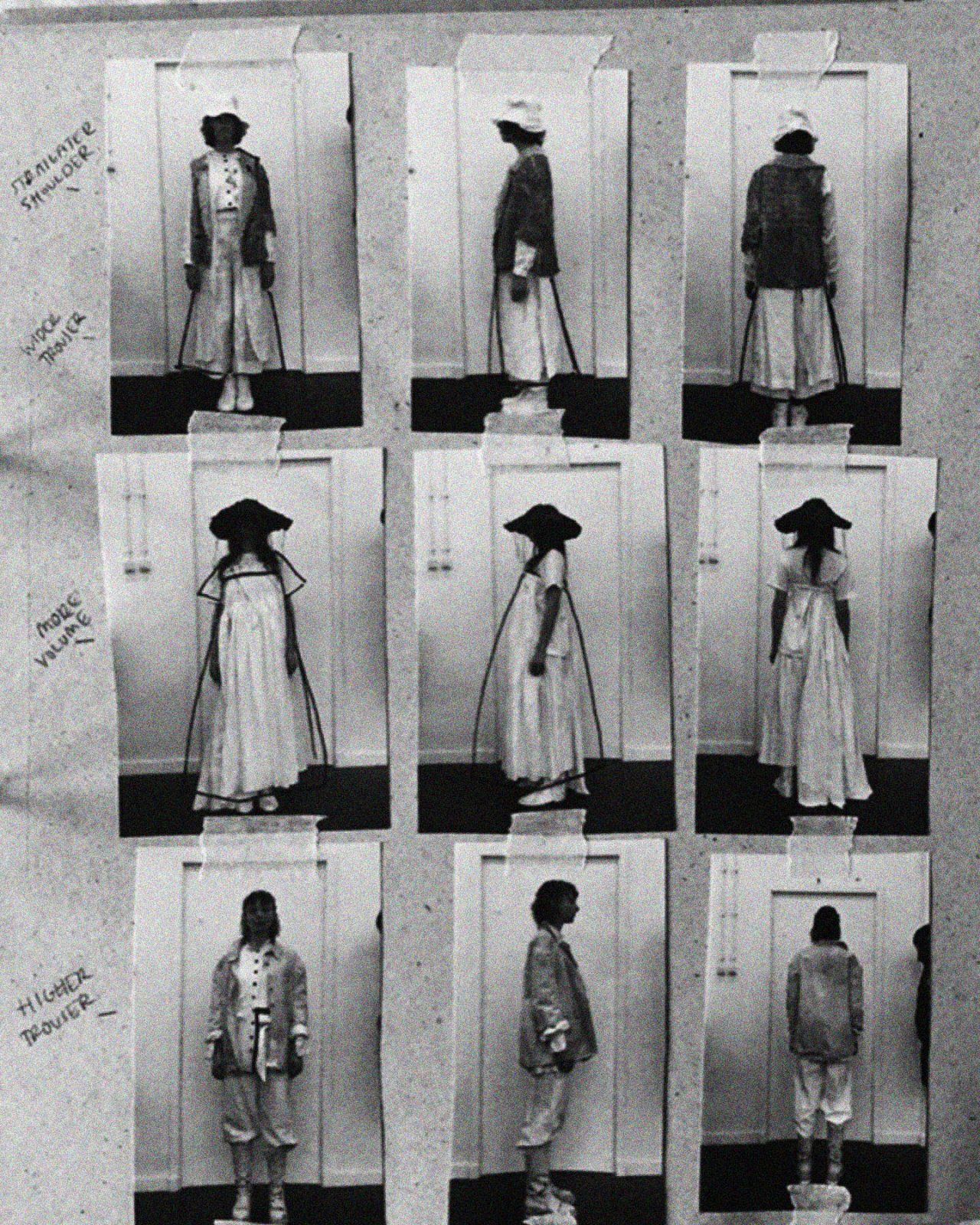
Hanakin Henriksson
Internship: Rave Review
hannahhenriksson@hotmail.com
www.instagram.com/killerrobot/
www.hanakin.gold/
Hanakin Henriksson is a clothing and jewellery designer based in Stockholm, Sweden. She works exclusively in repurposed fabrics and sources most of her materials during trips to the Swedish countryside. Her work is a protest against newness as a definition of beauty.
GRADUATION PROJECT
Livstecken
Too often we define the new and untouched as the epitome of beauty. If we learn to see the cumulative effects of history and life in our selves and our possessions as beautiful and valuable, it will expand out appreciation of life and let us touch the vast expanse of history. The fabrics of this collection are sourced from my home province in the south of Sweden, linens, sheets, tablecloths or other fabrics I’ve collected over the years, or fabrics that have been given to me by friends and relatives. The yellow dress is hand dyed with spices and hand smocked, reminding the wearer of the pleasures of handcraft.
This is an introspective collection, focusing on the wearer and their interaction with the garments. With fabrics sourced from my home province in southern Sweden and dyed with spices and wine, they represent a luxury of the soul, aiming to increase a sense of quotidian pleasure through the beauty of their history; a fading print, incarnate memories, proof of experience, smells from the past, textures reminding of the earth.

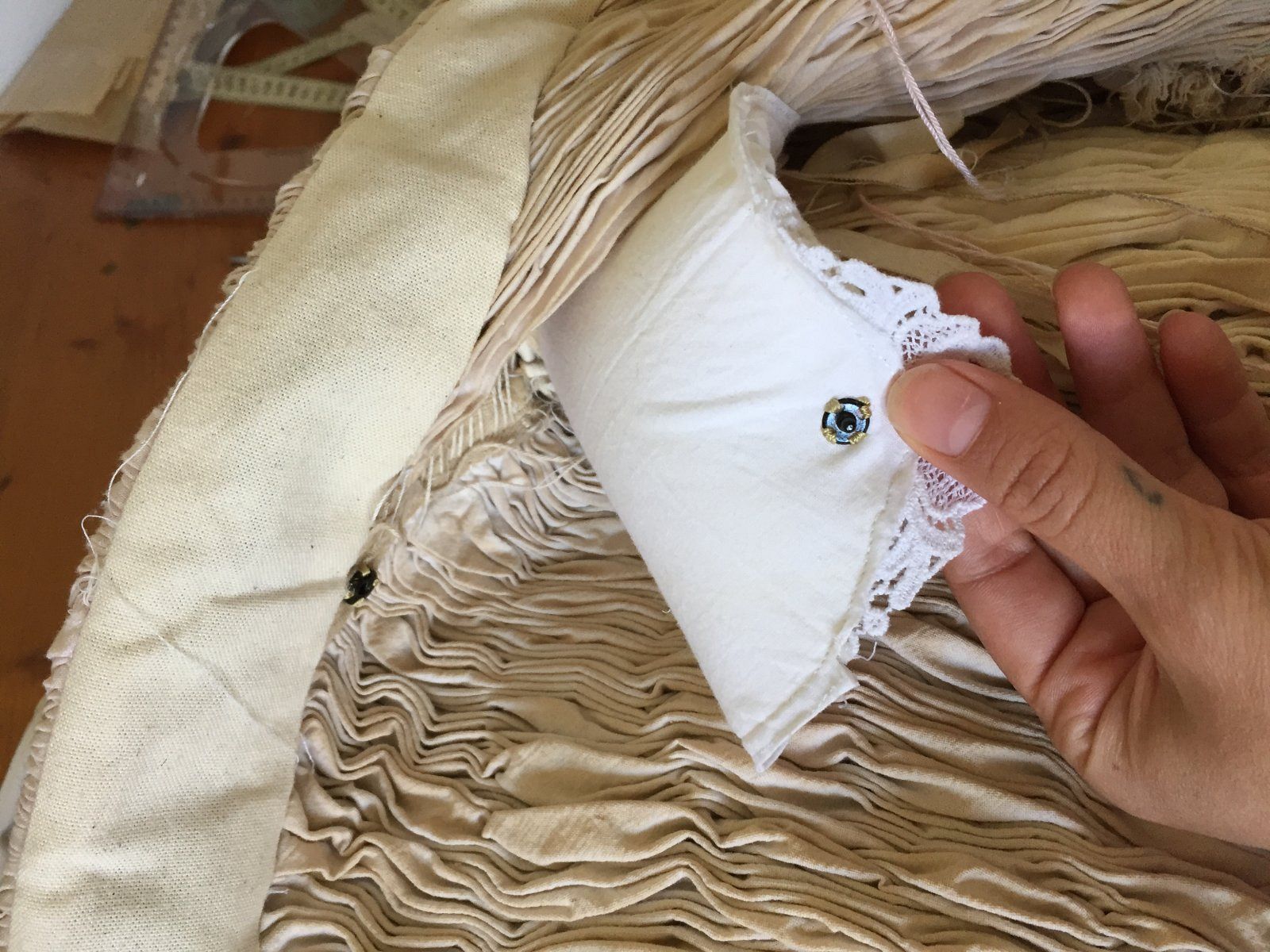

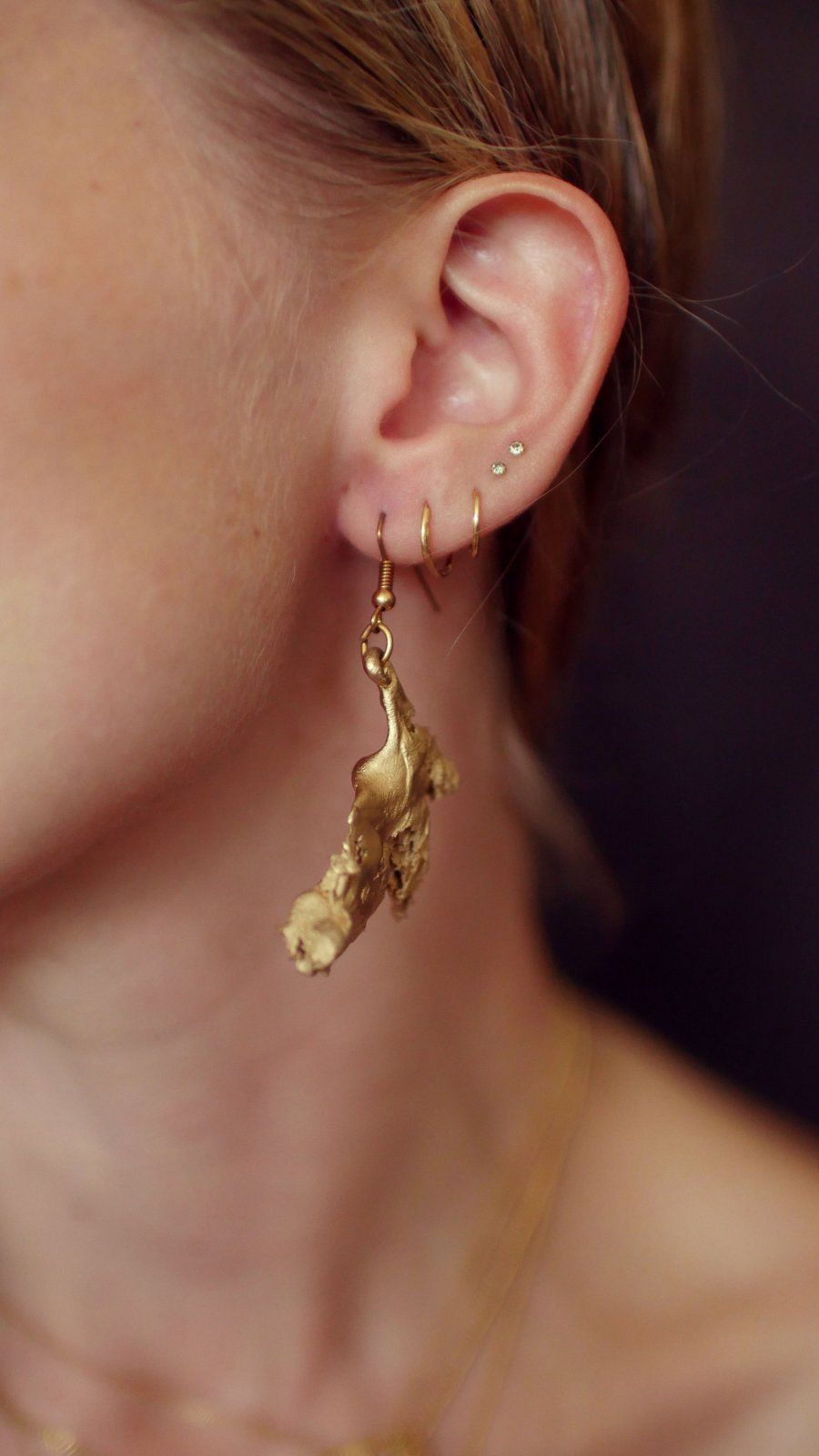
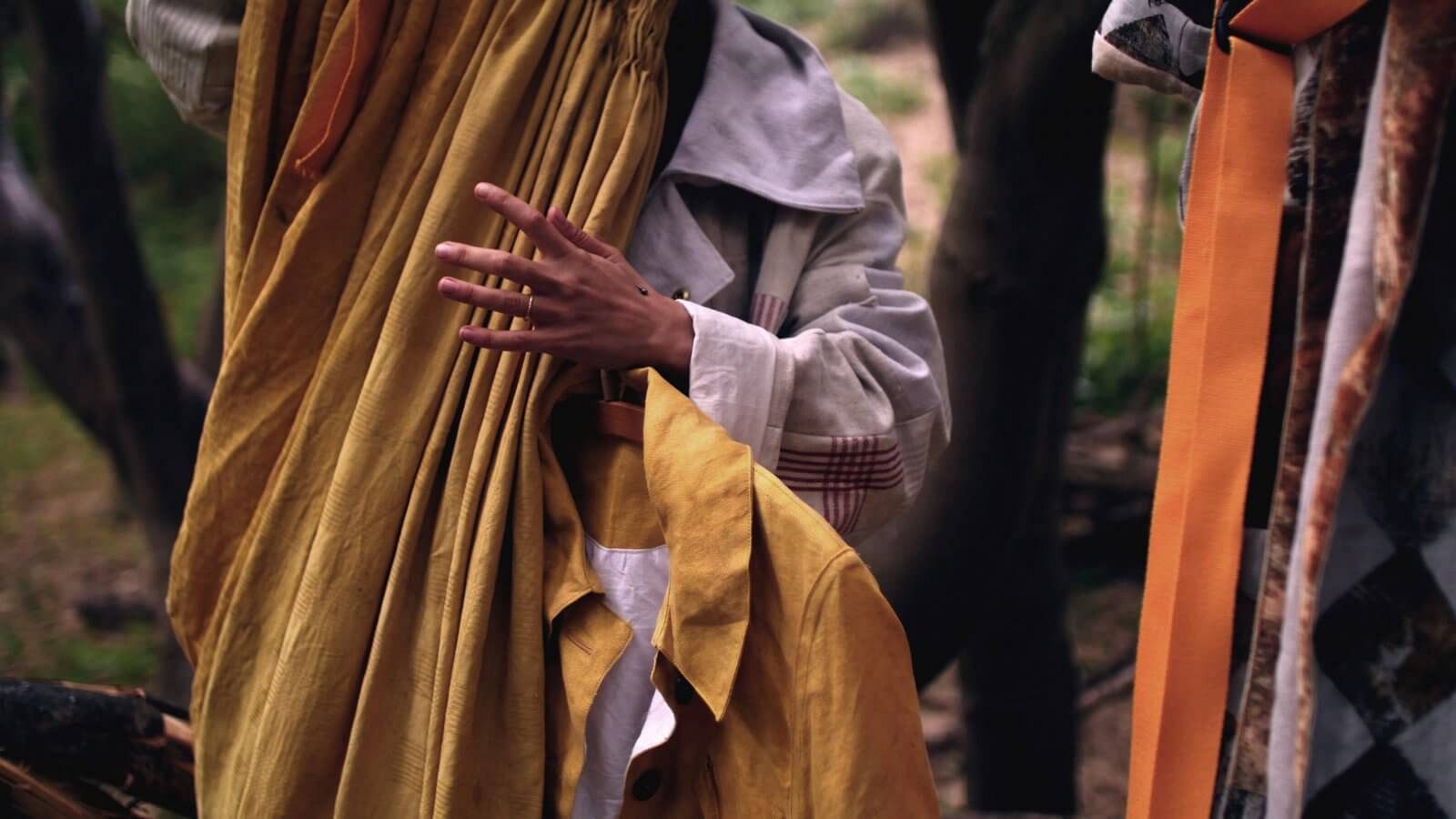
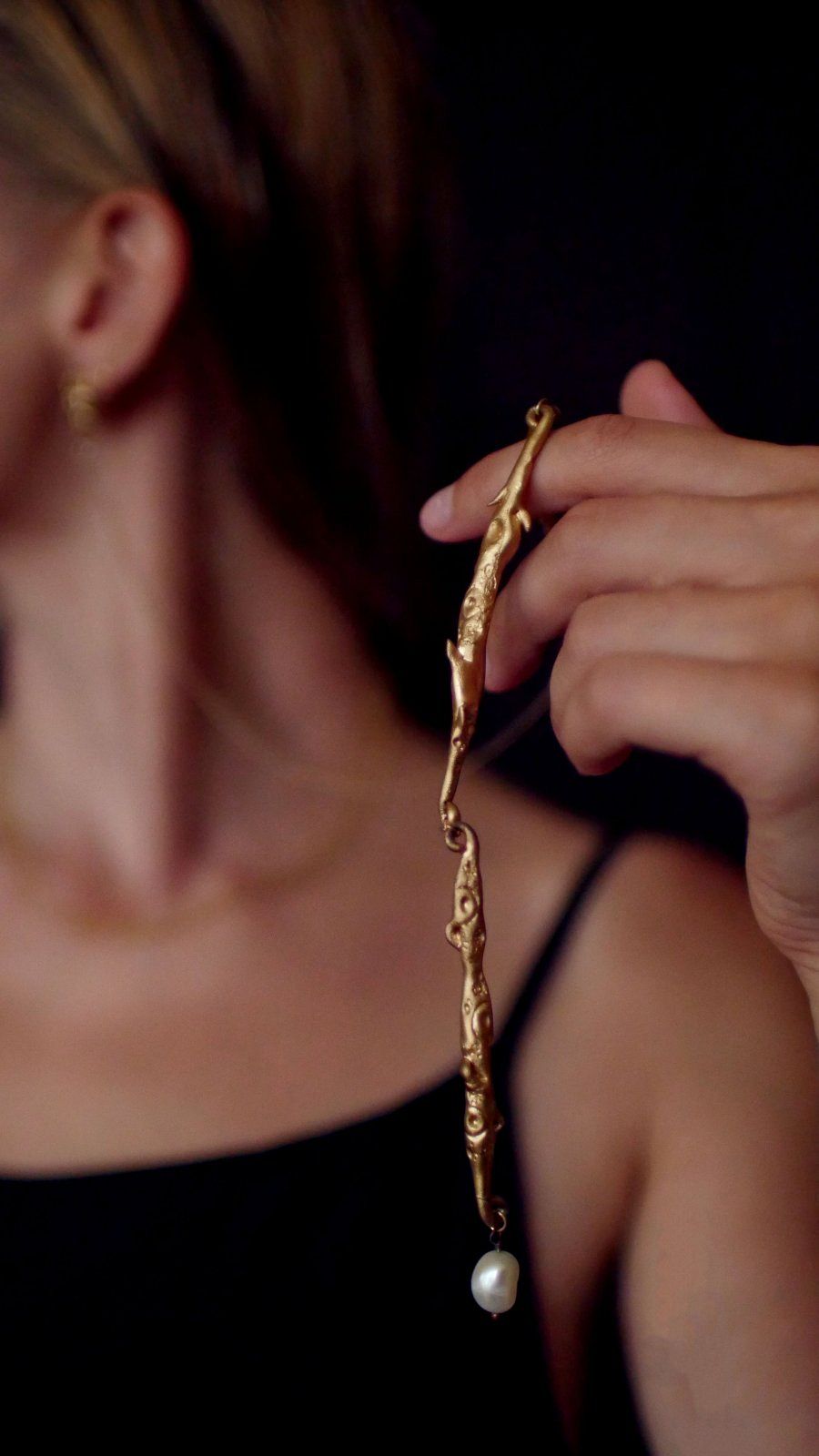
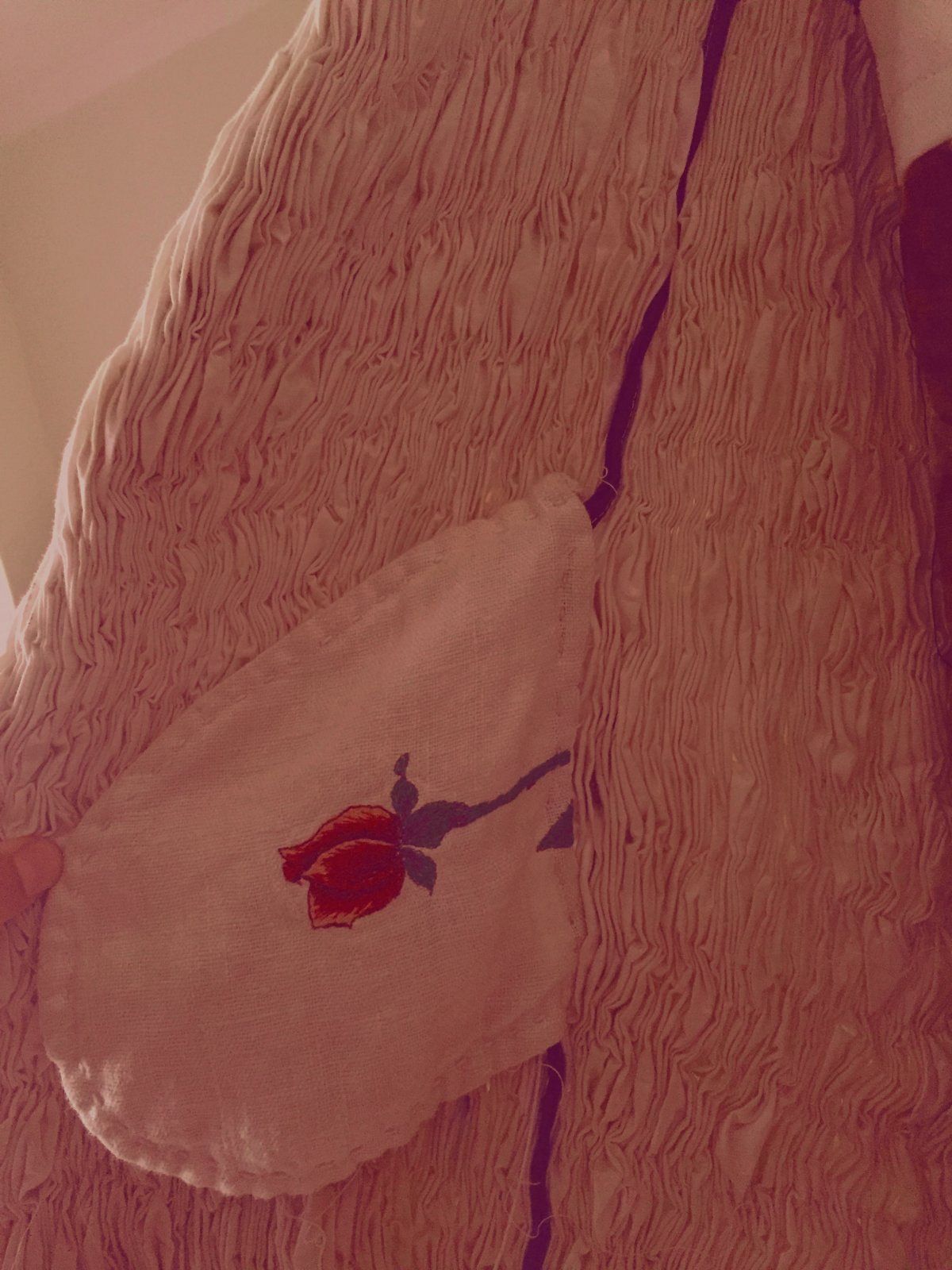
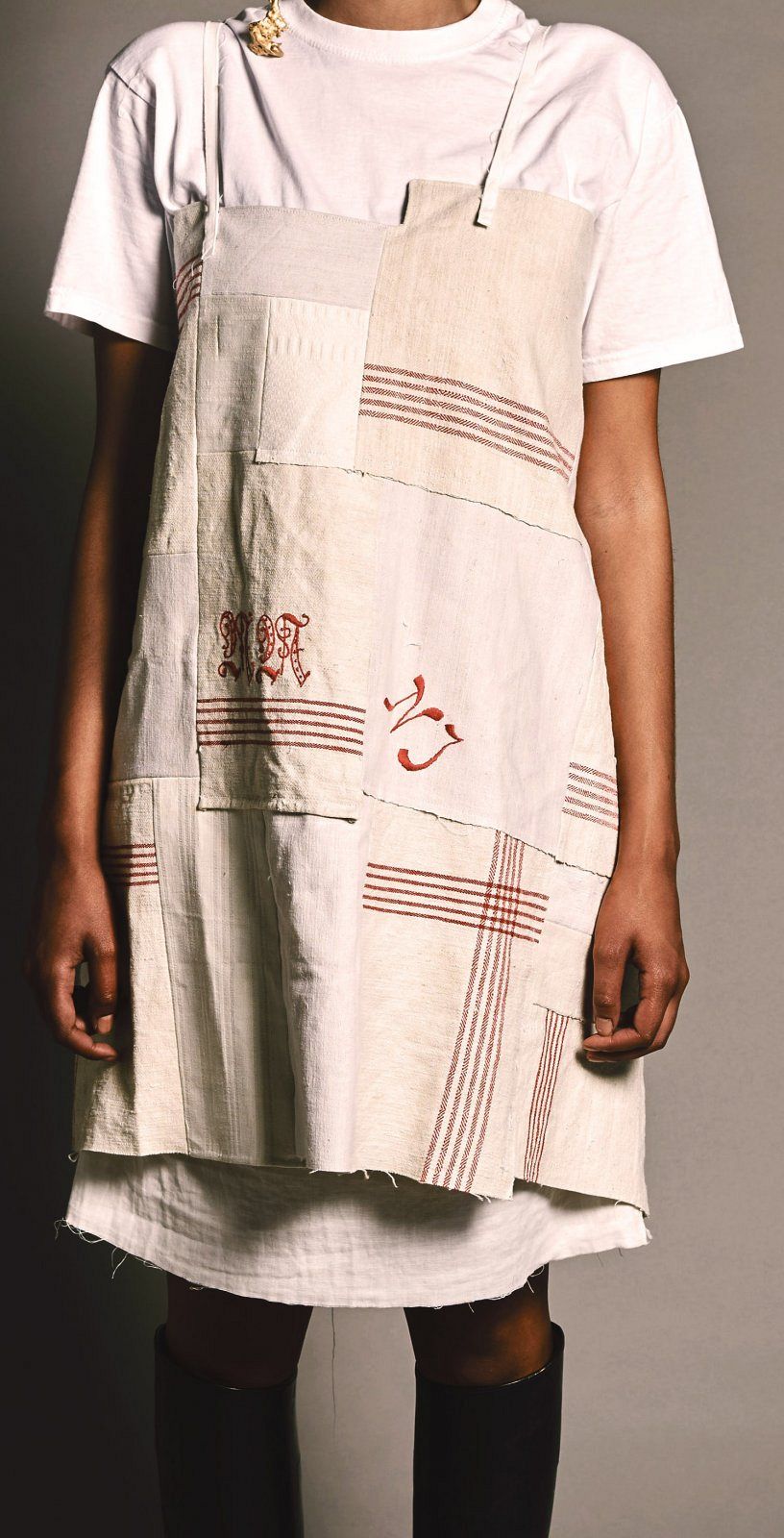
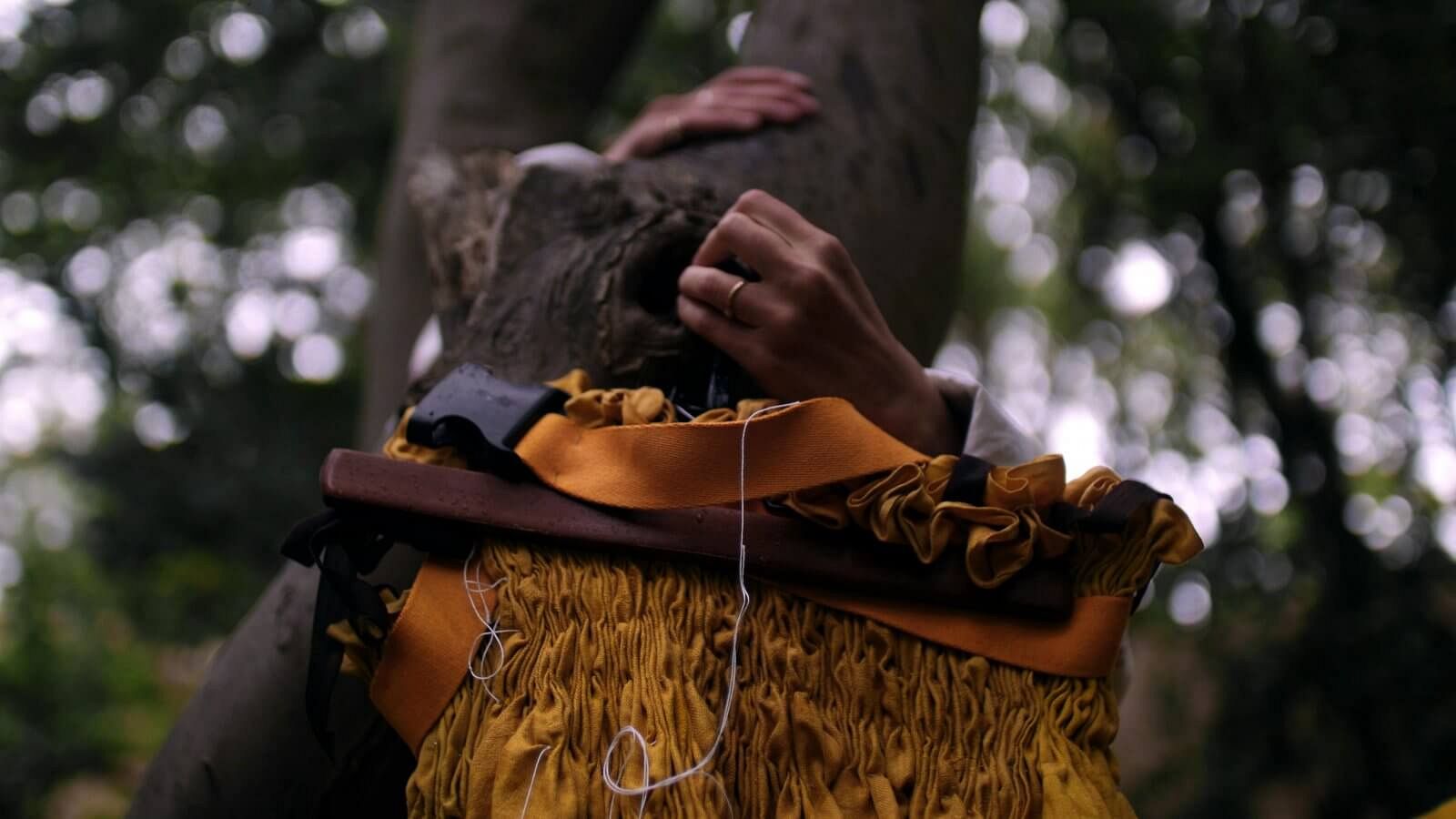

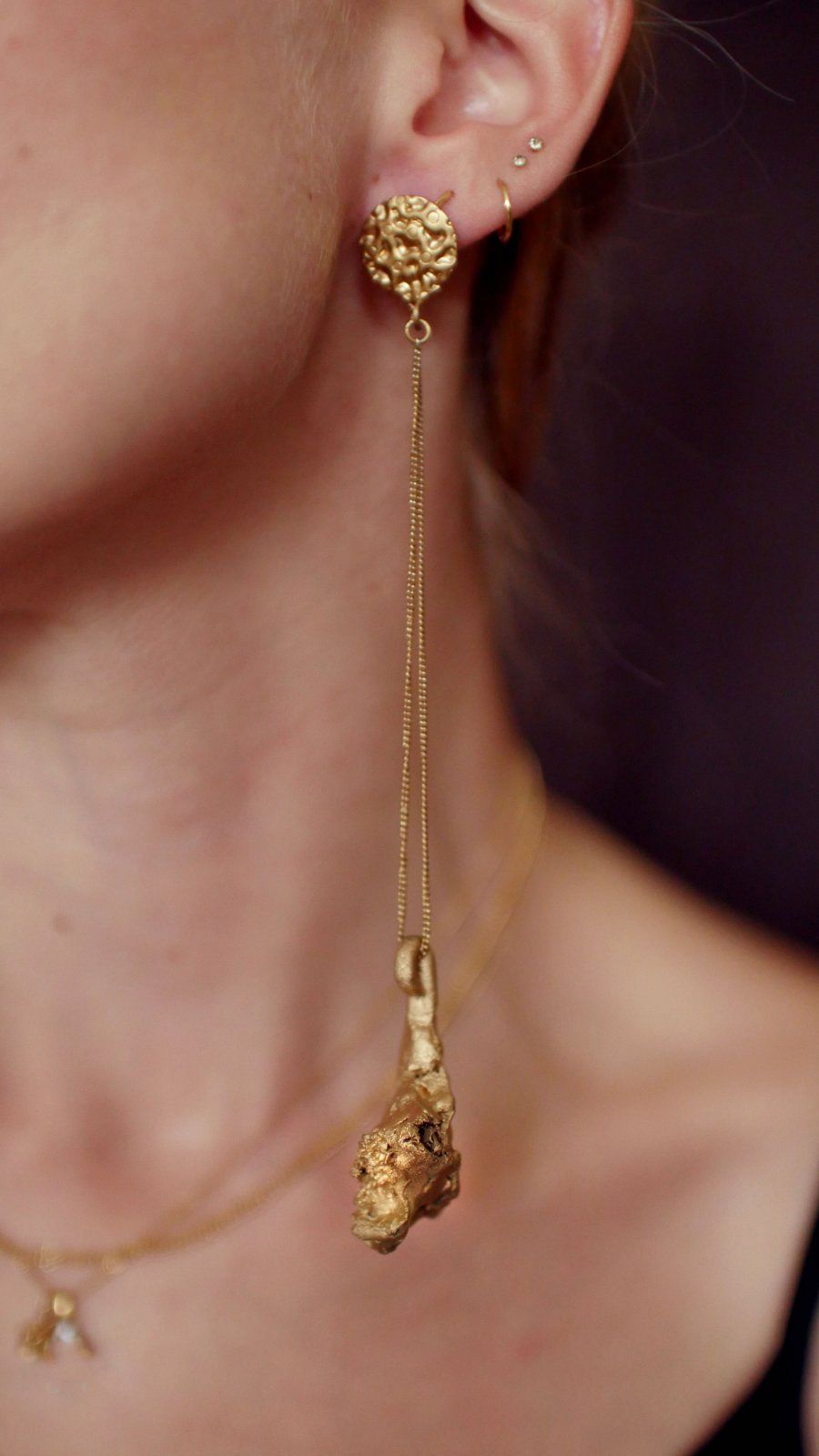
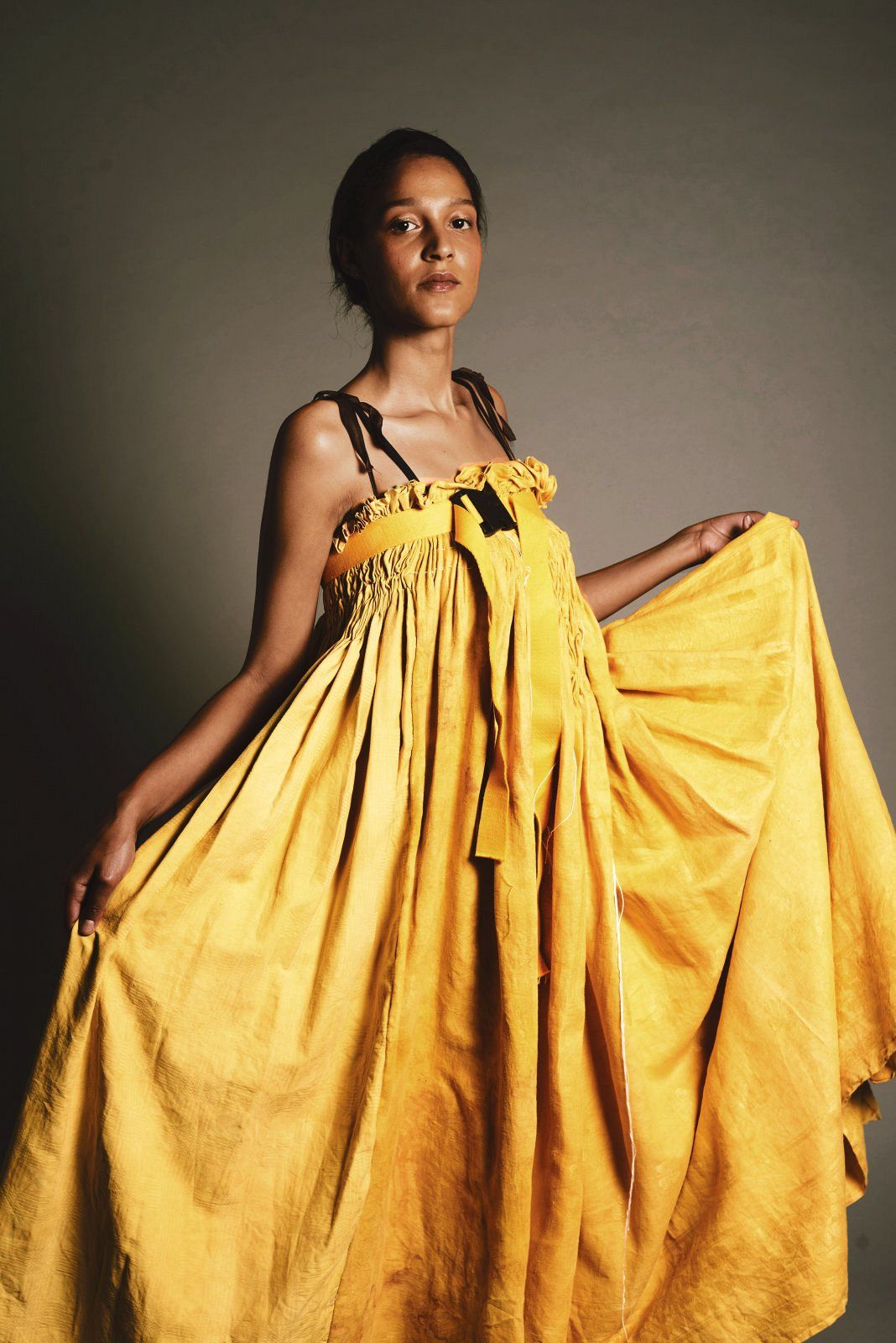
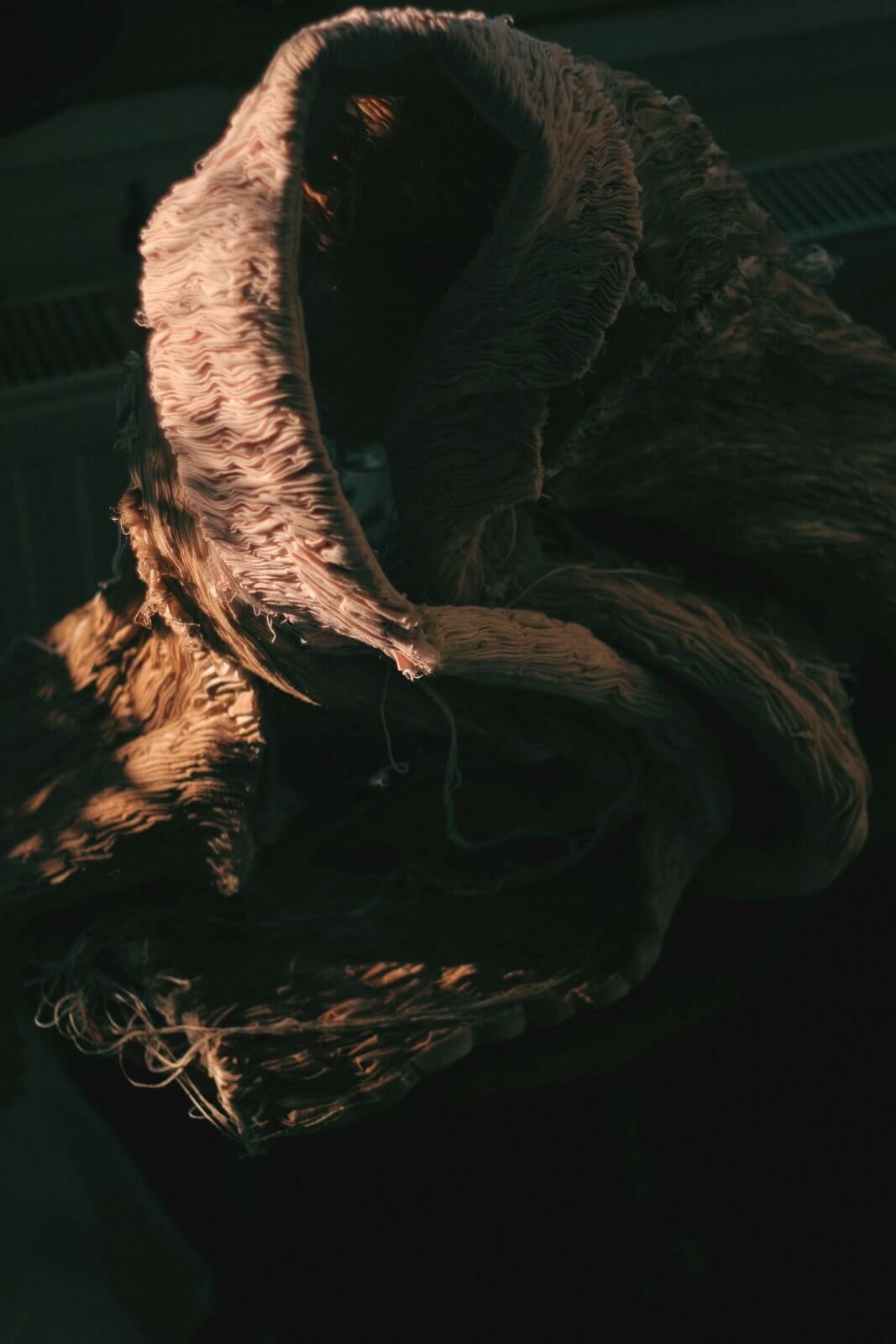

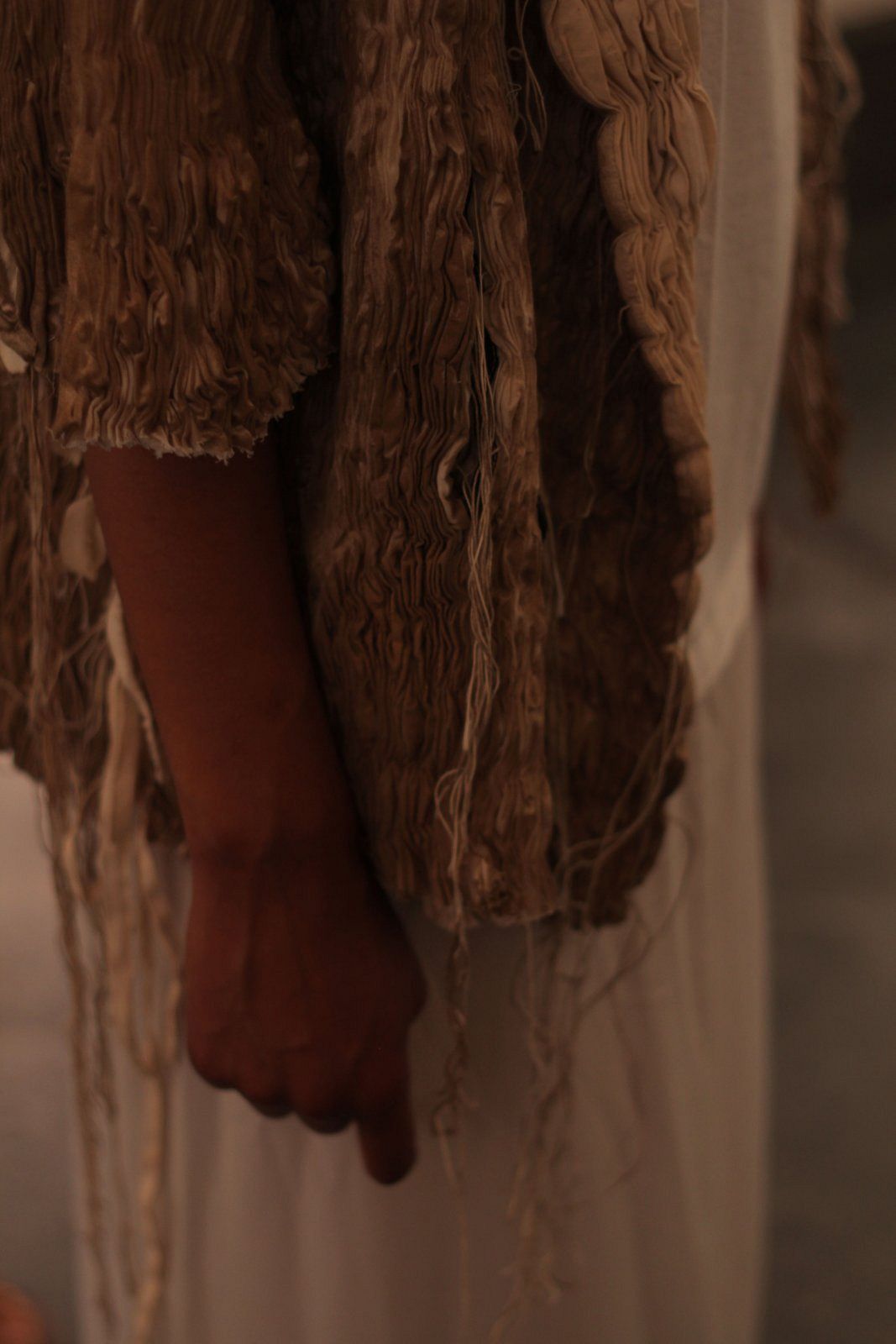
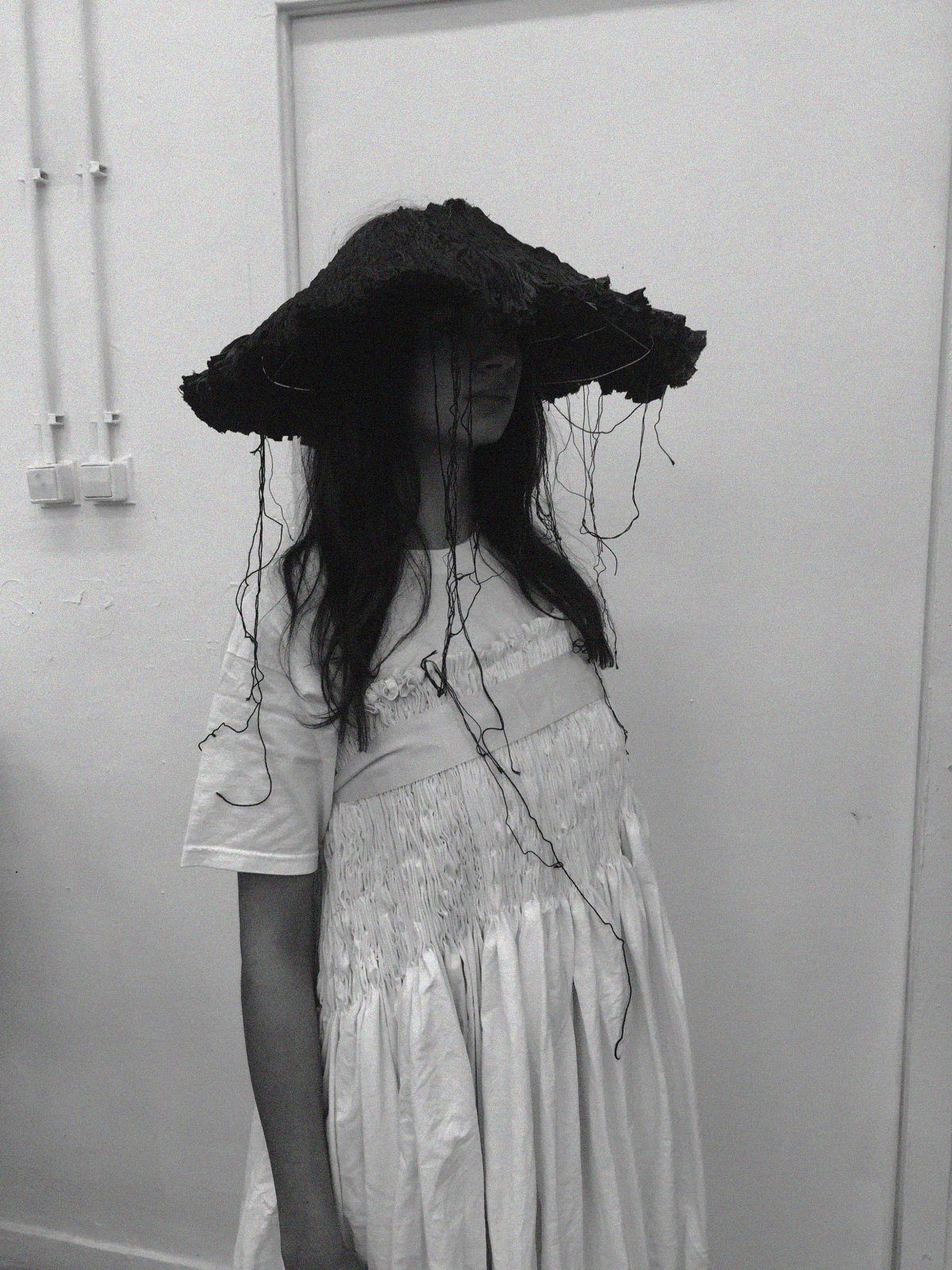
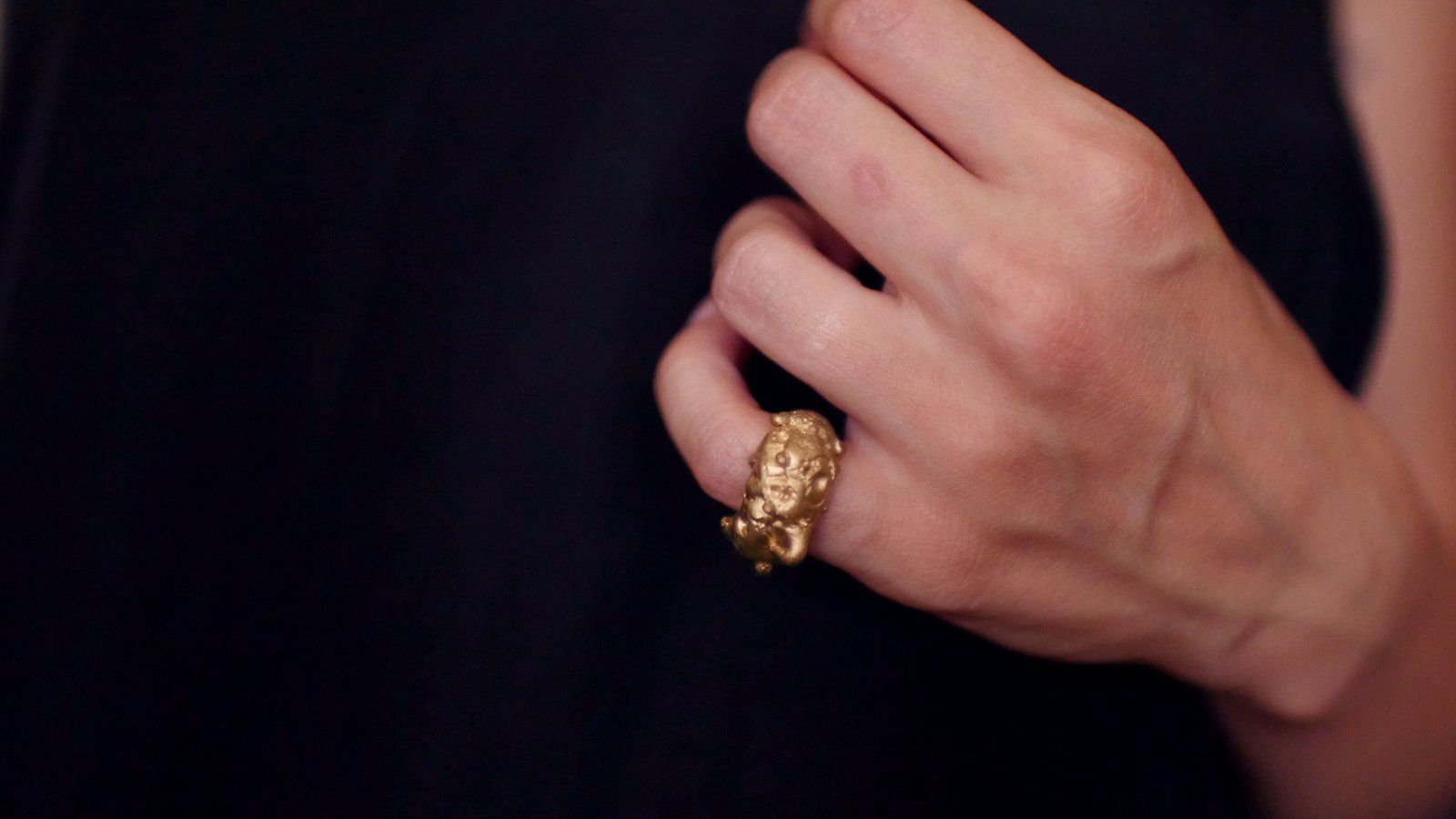
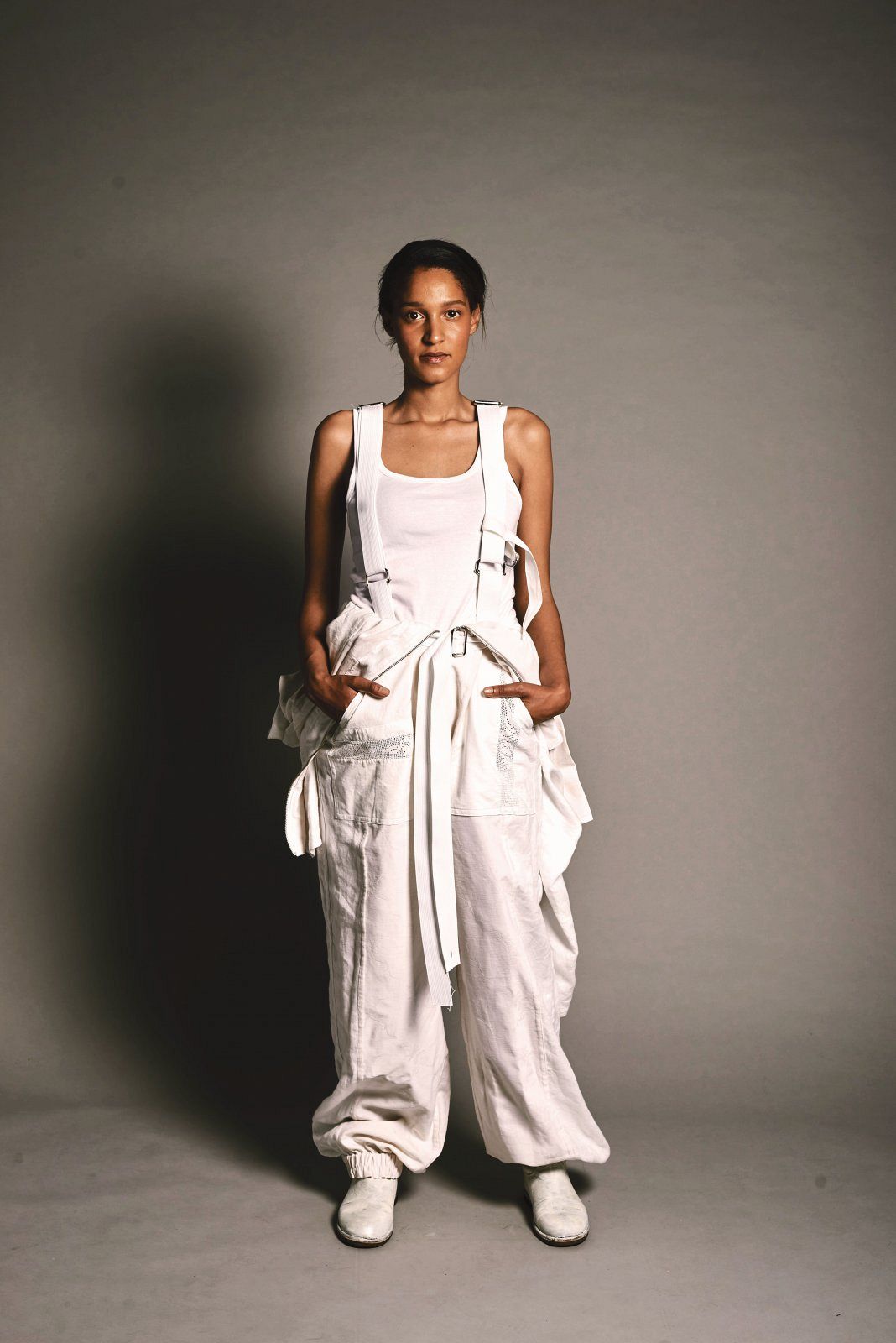


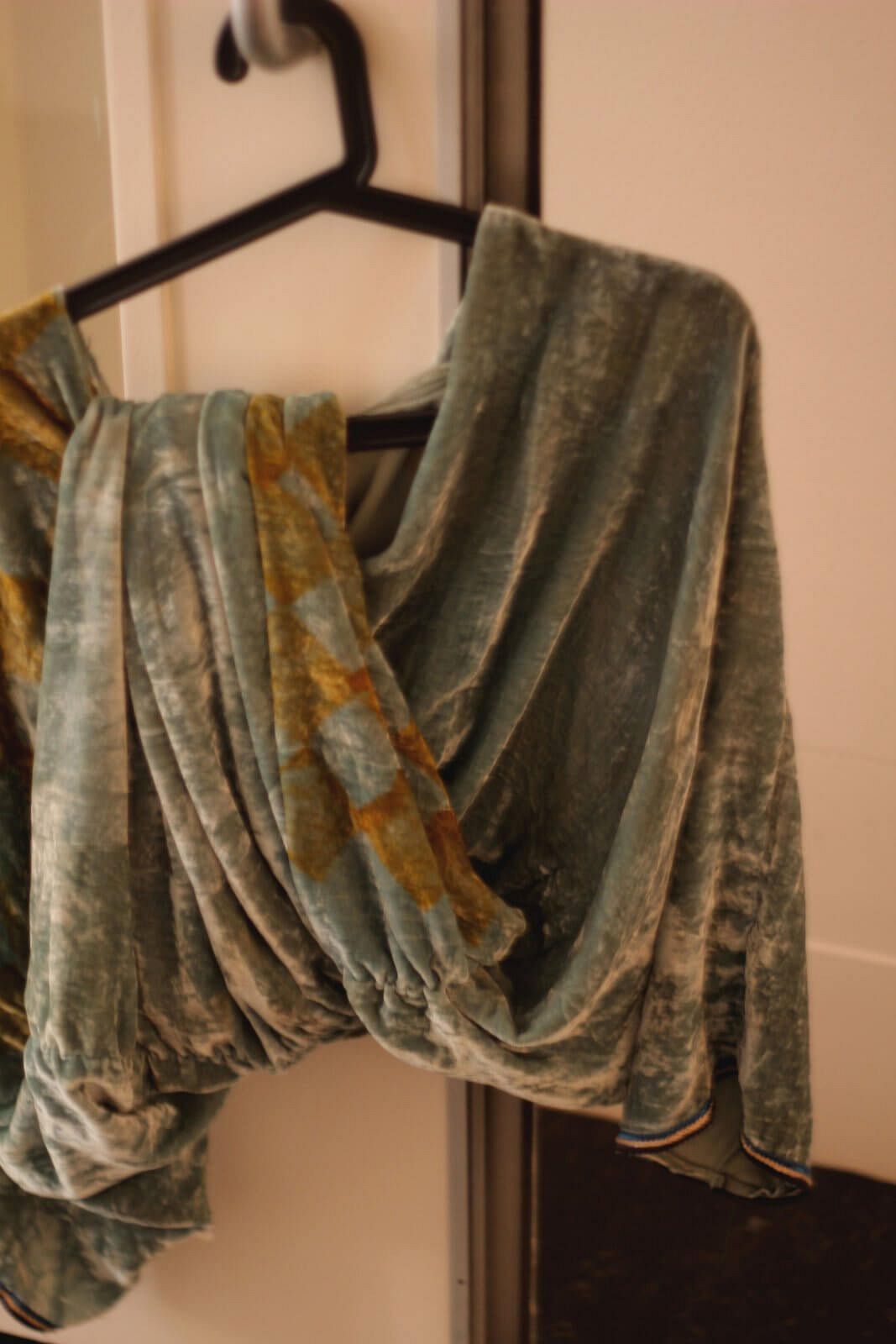
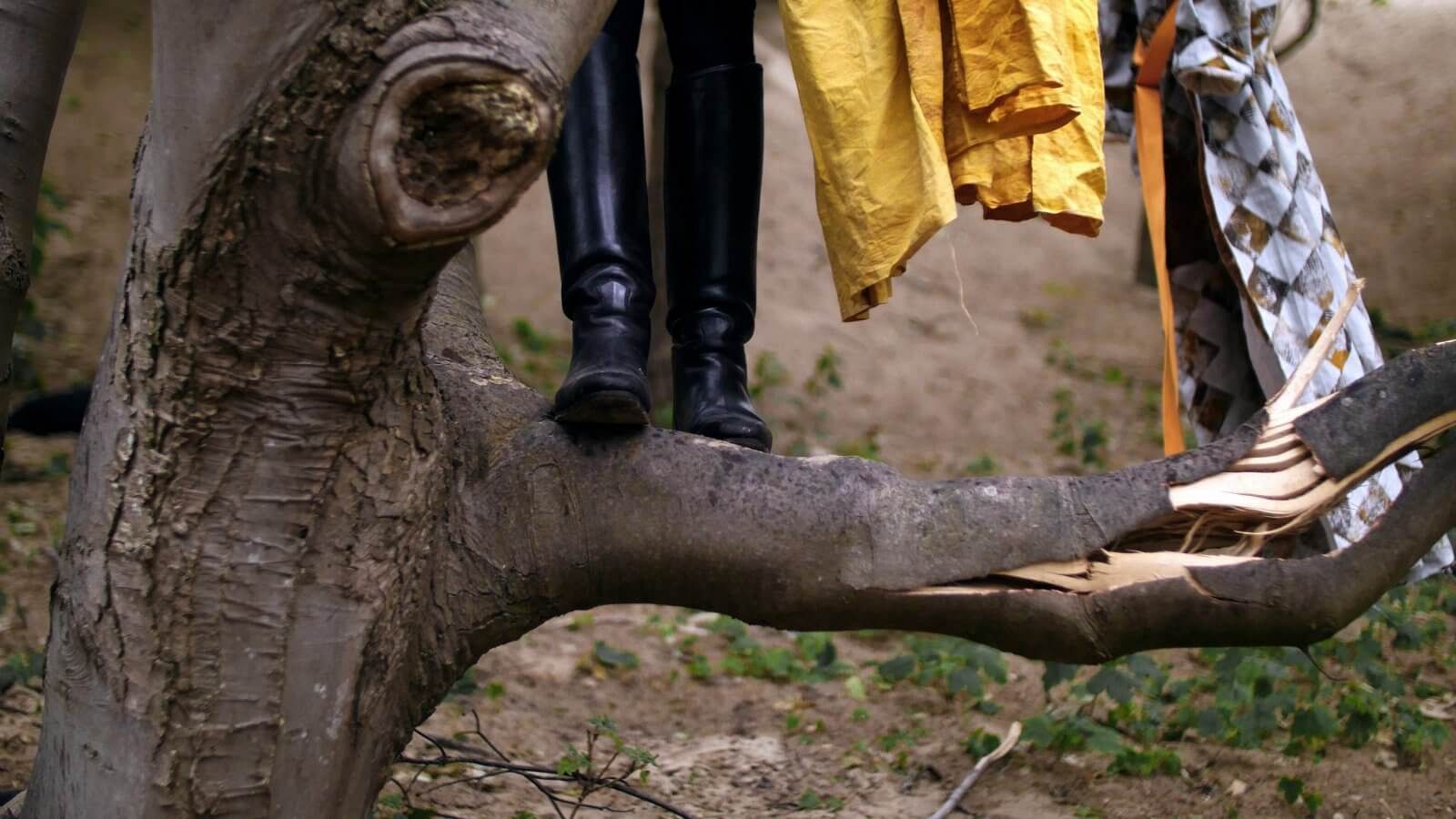

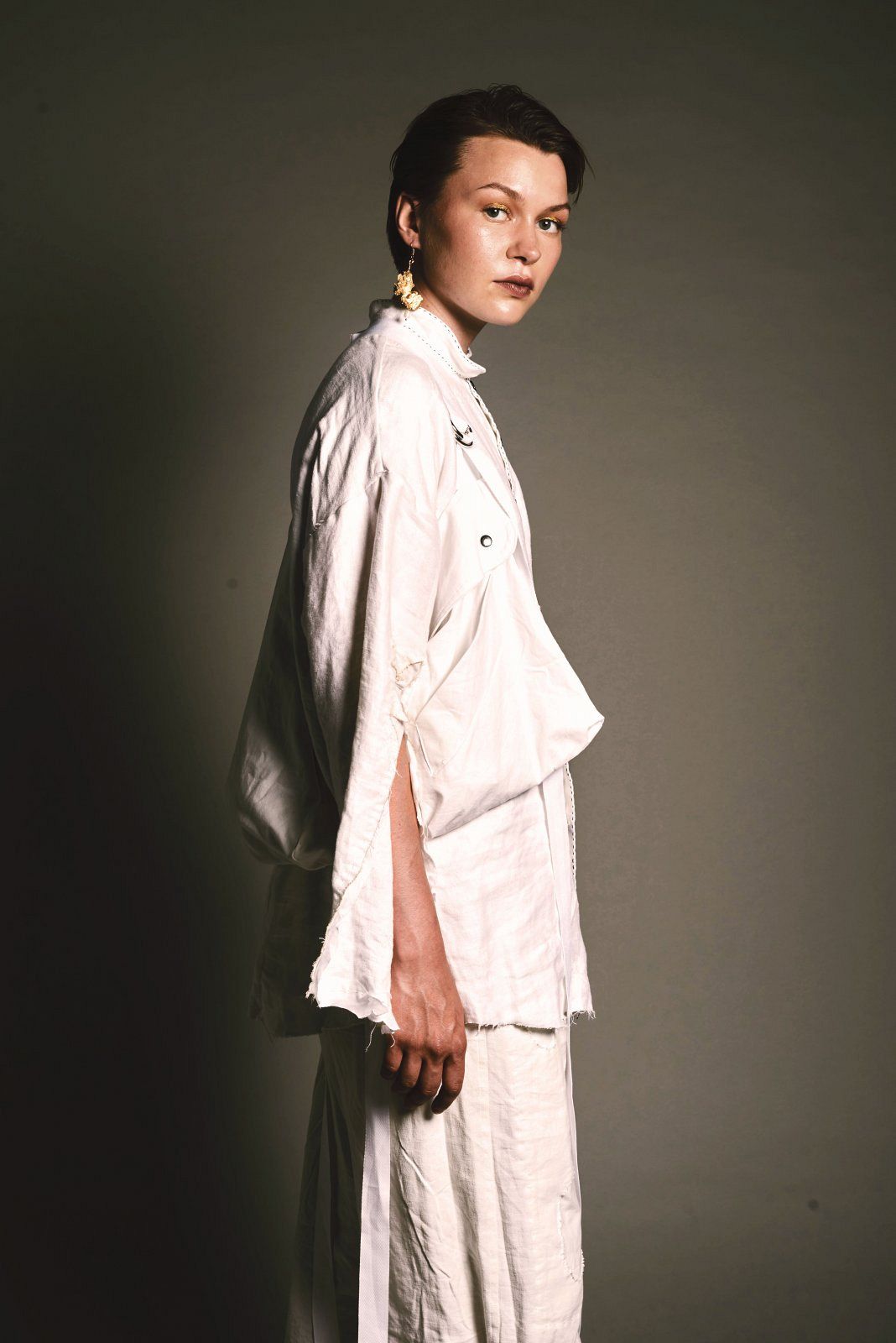
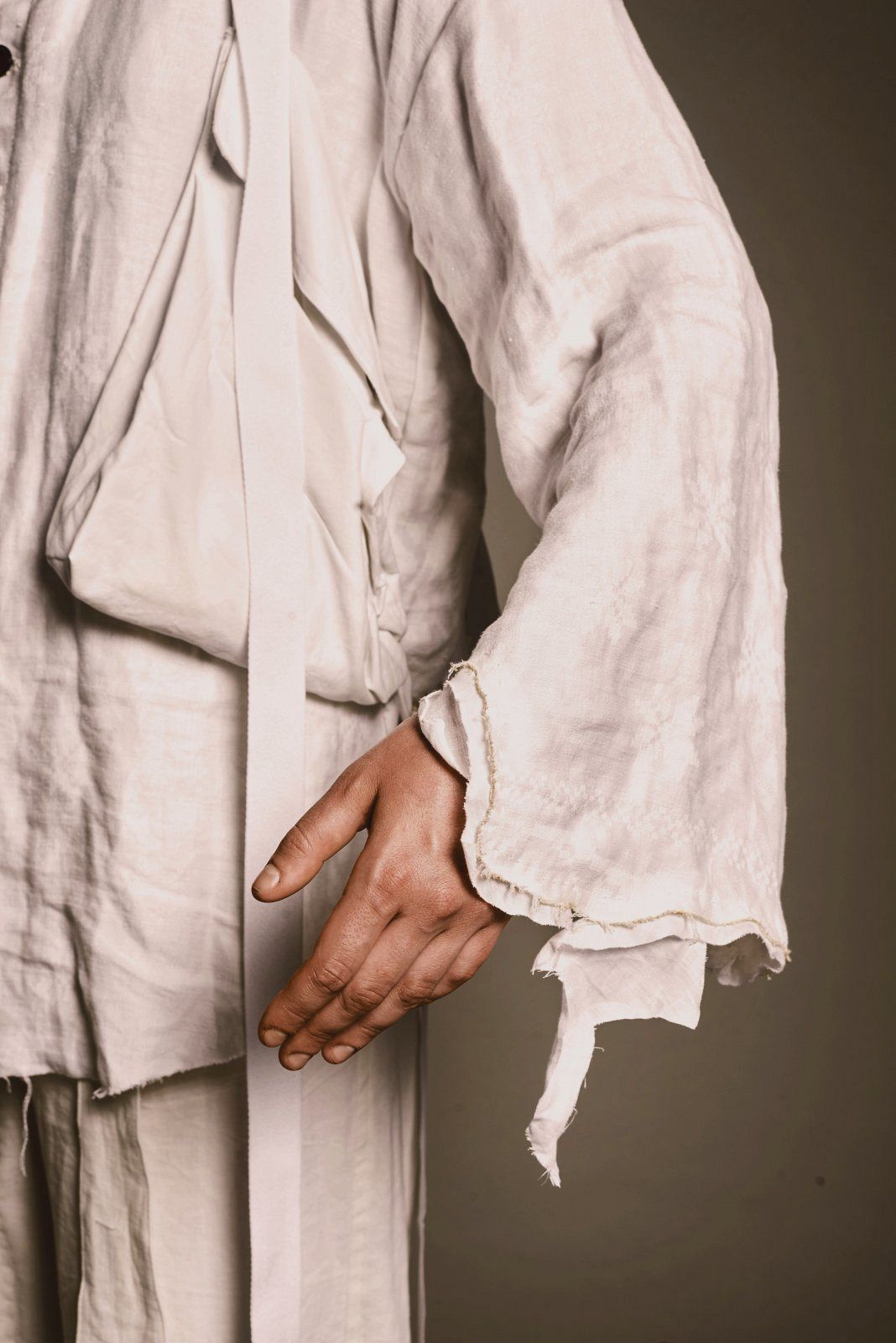


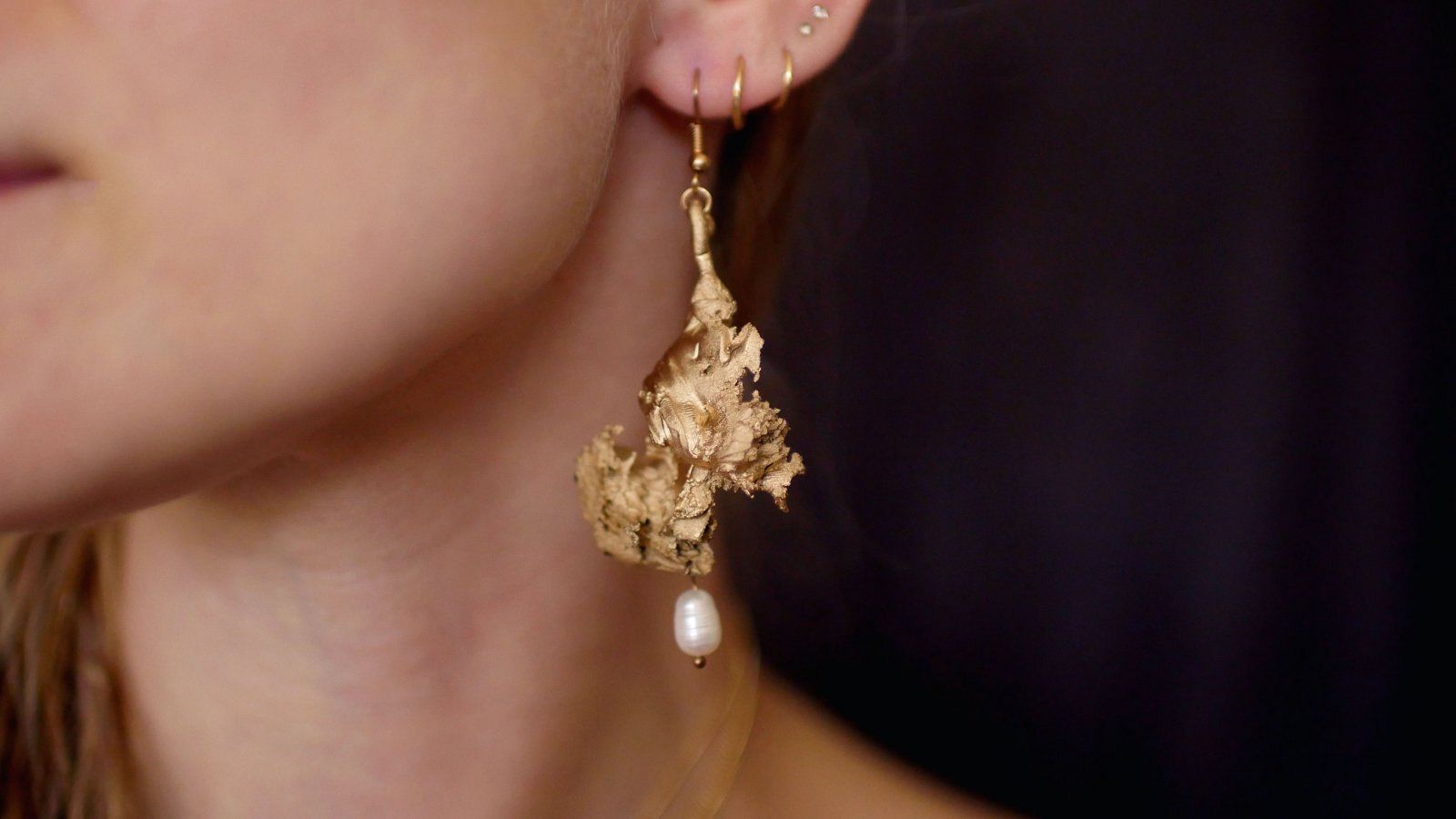
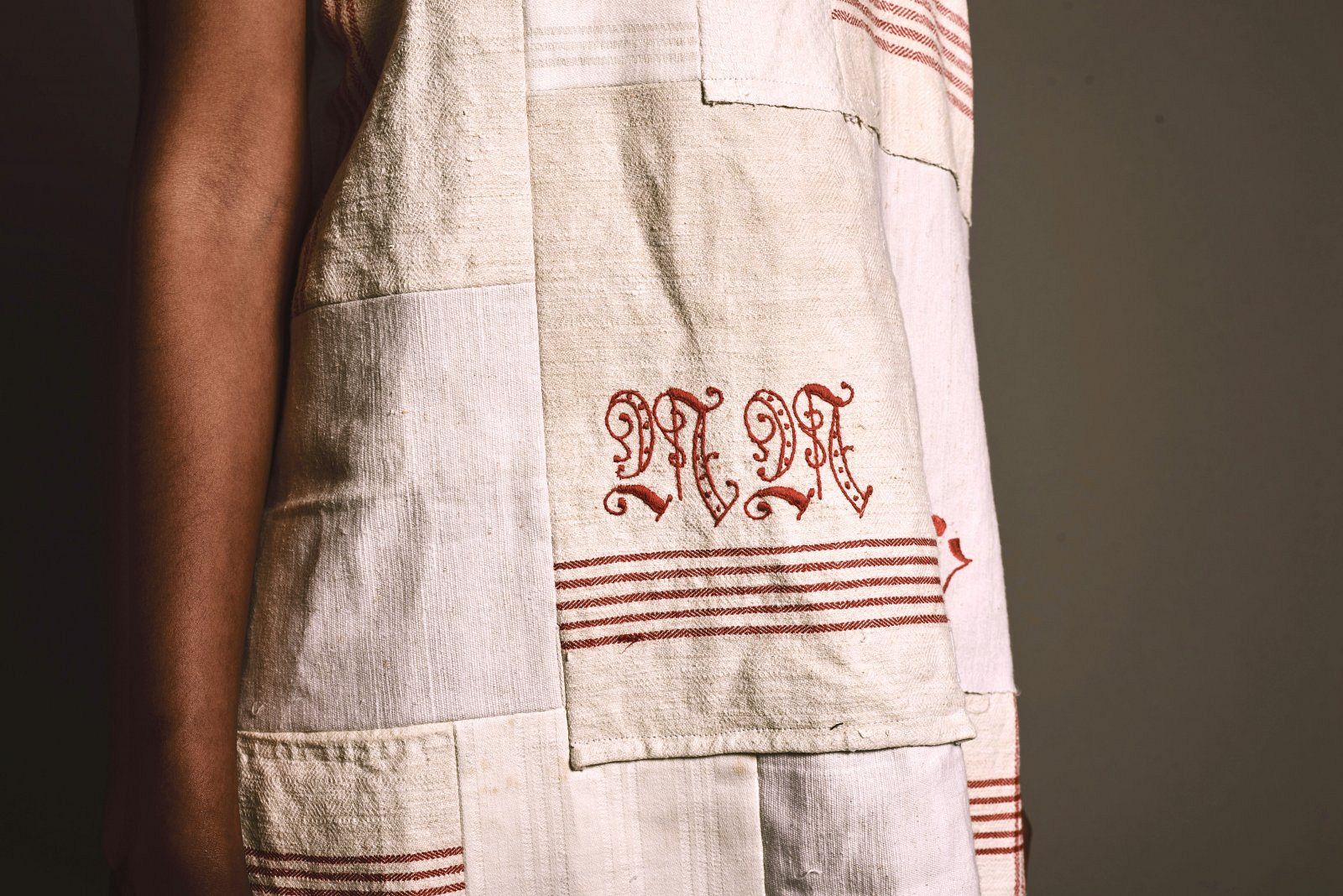
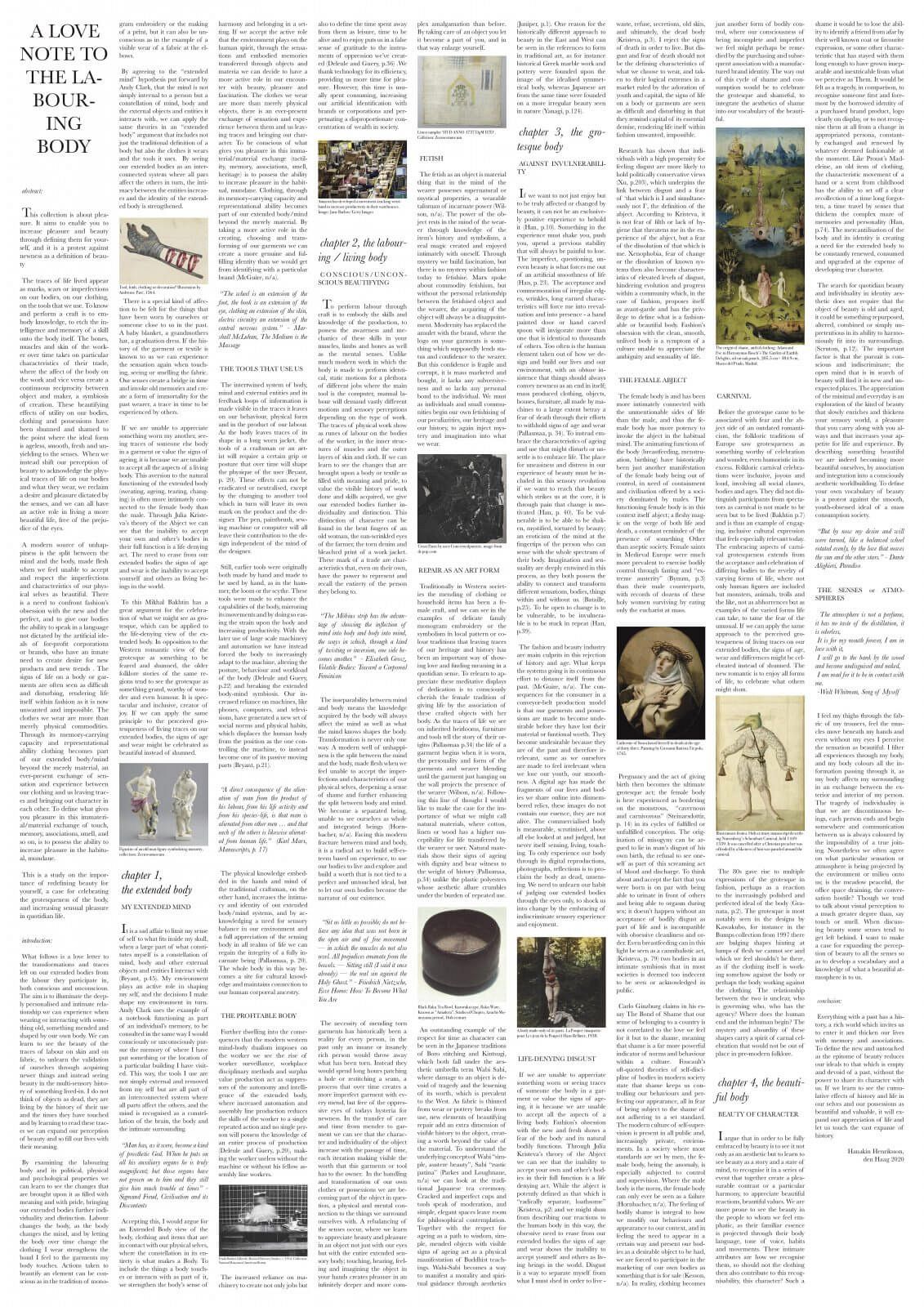
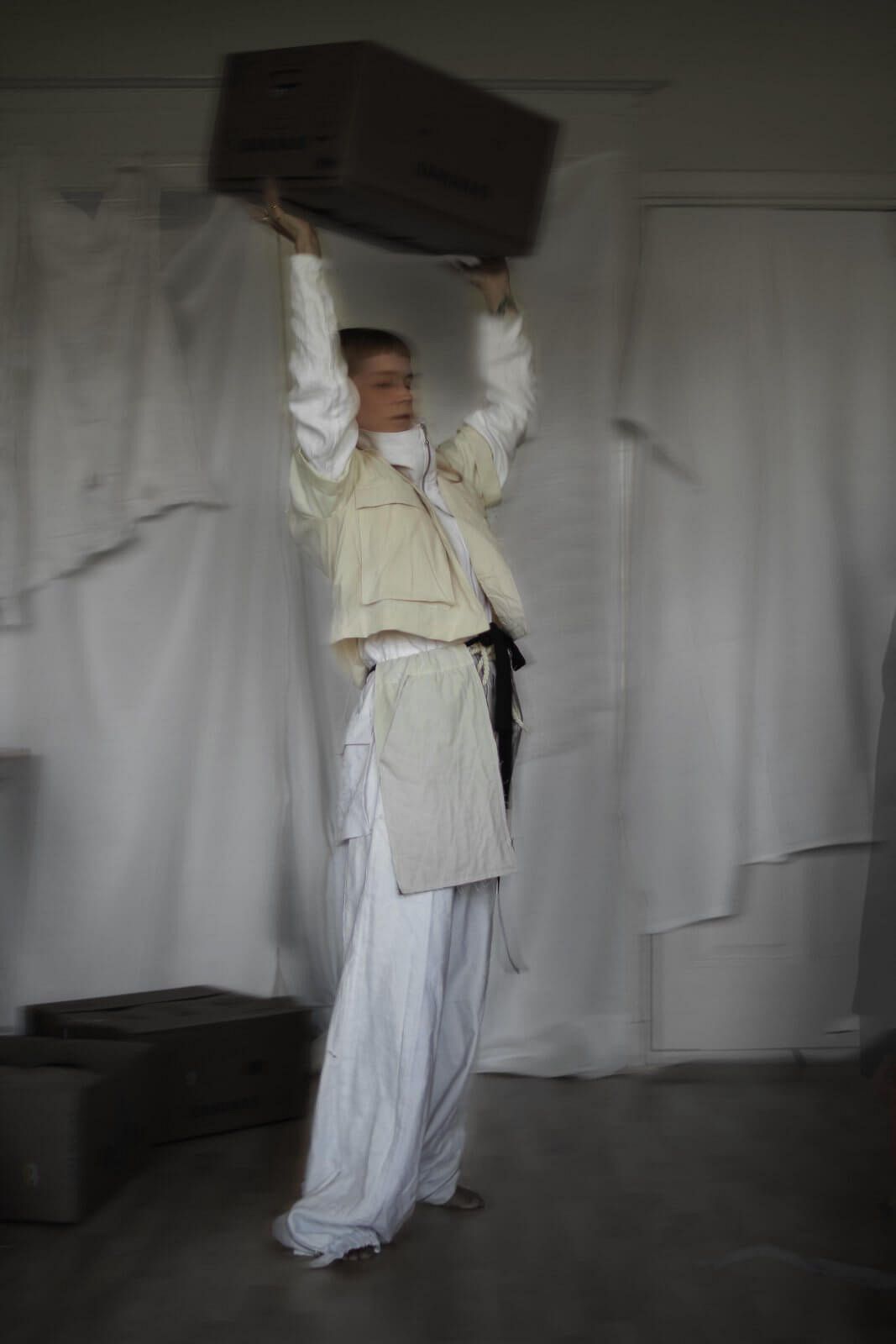
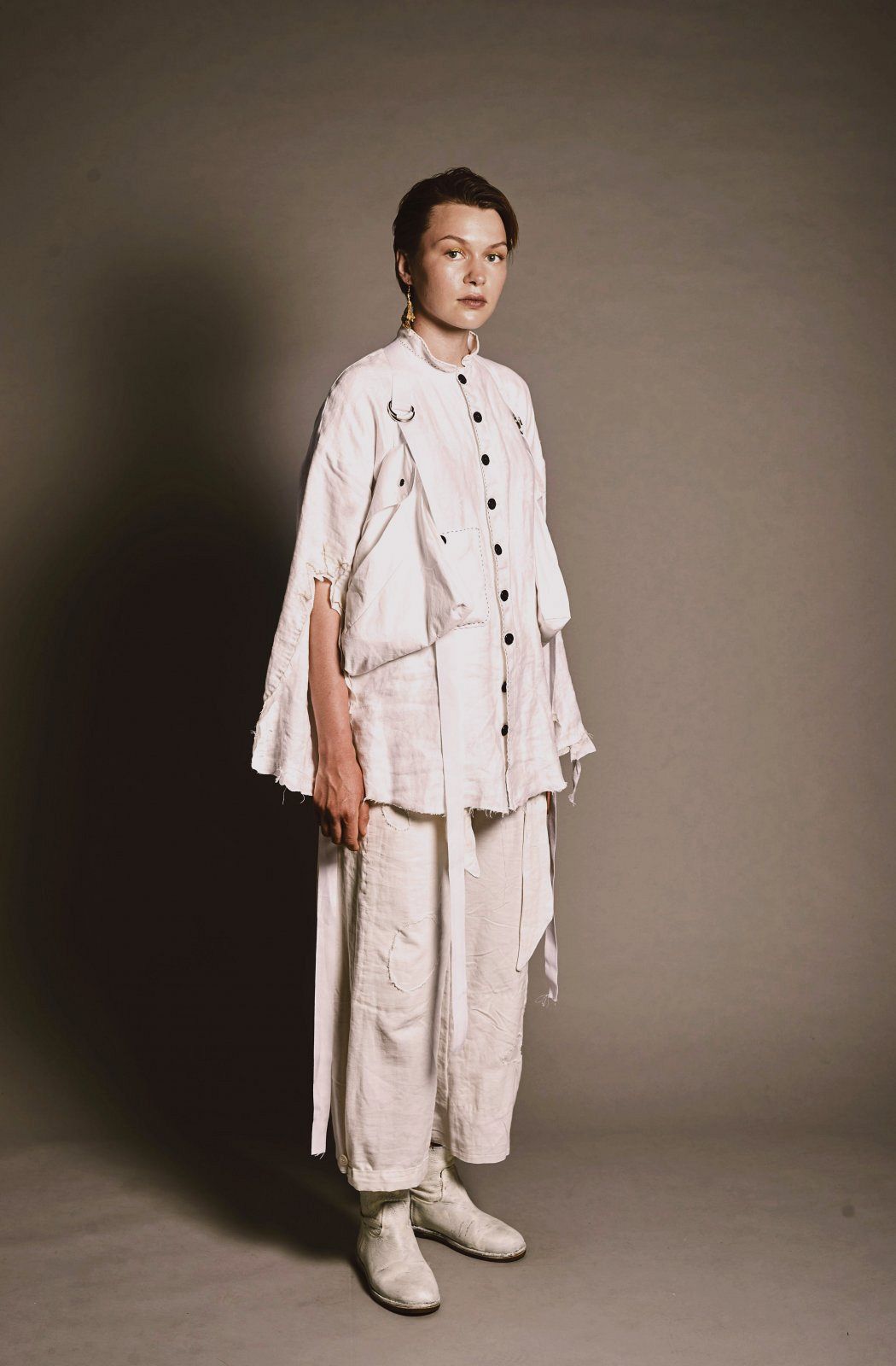
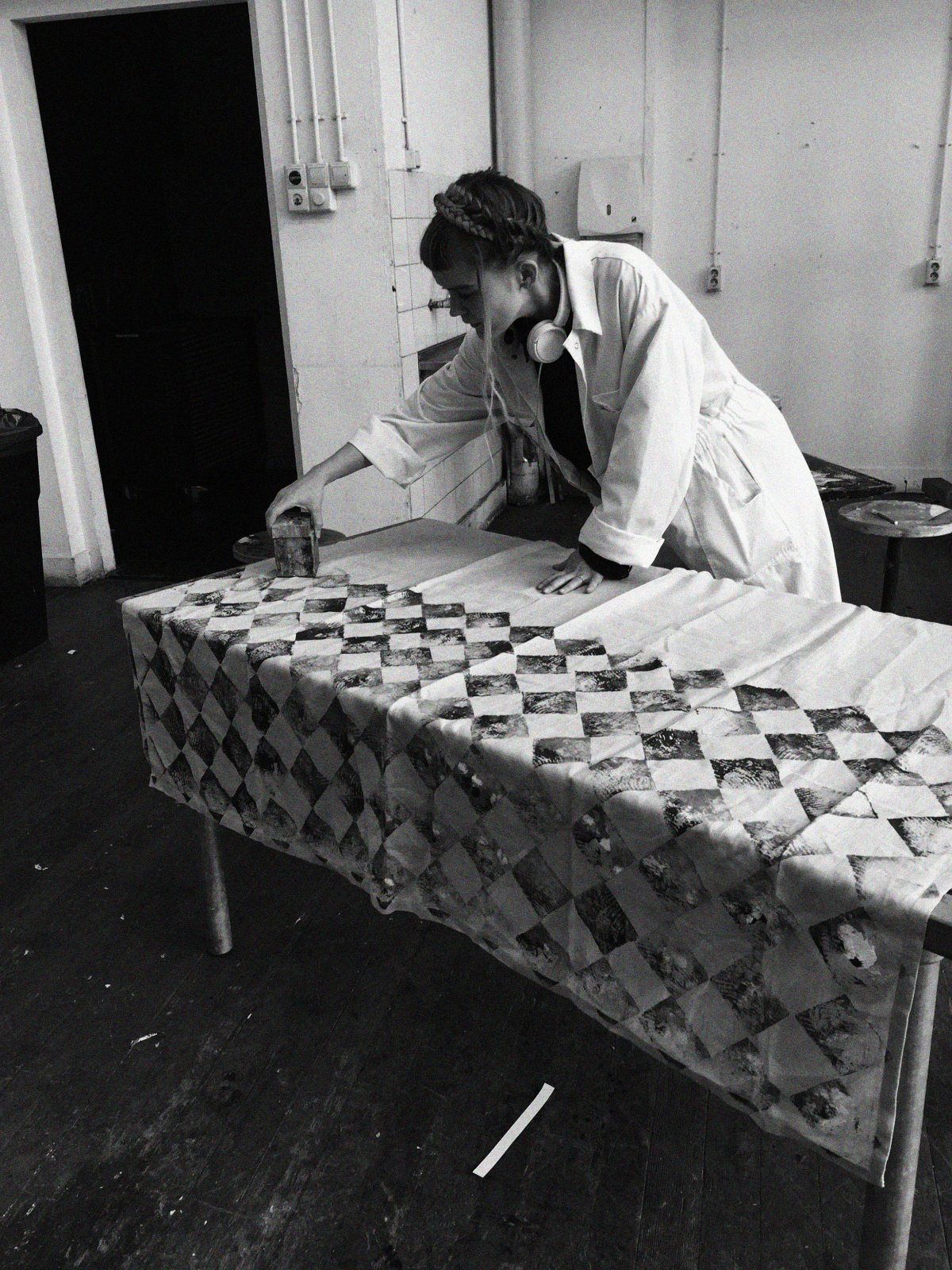
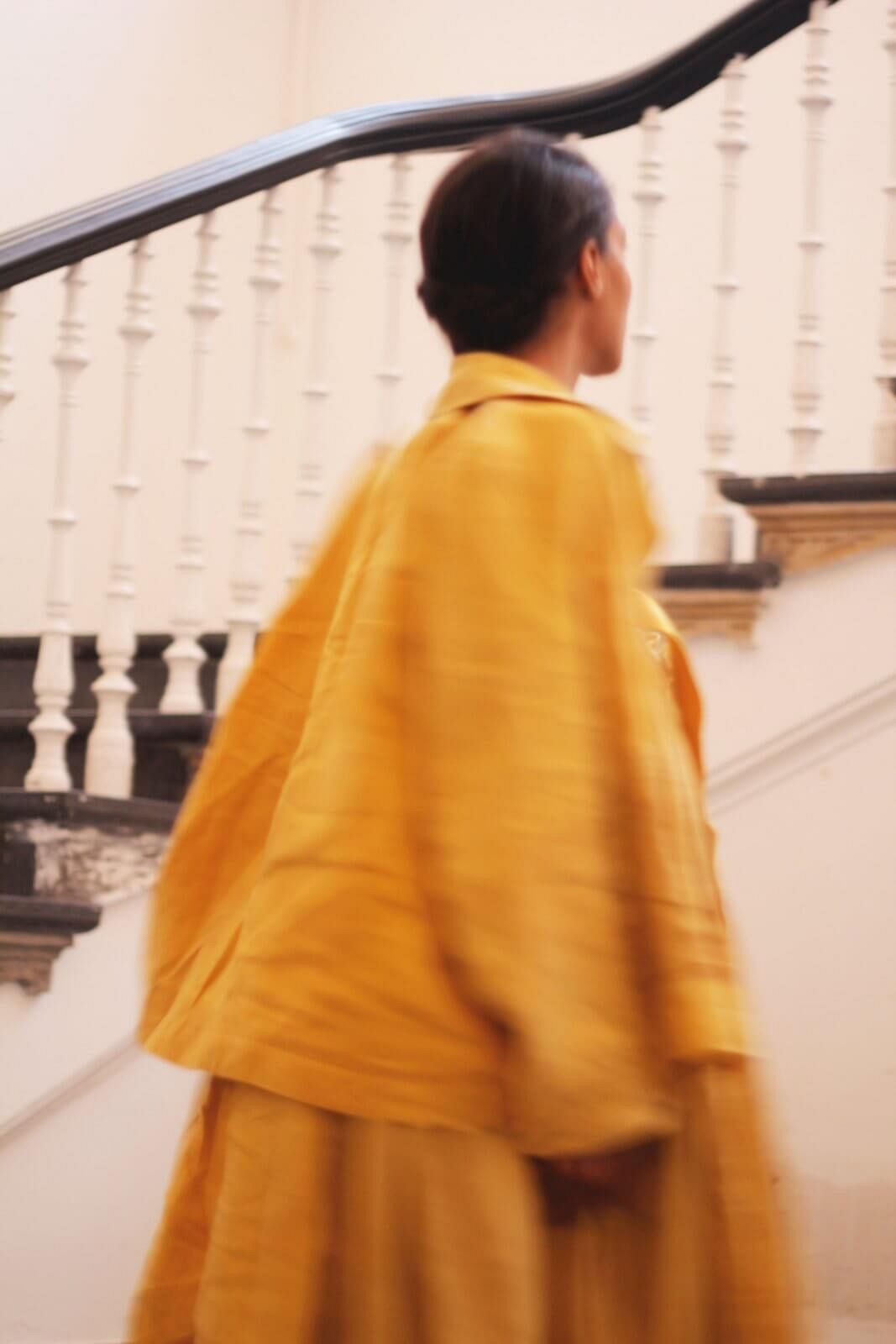

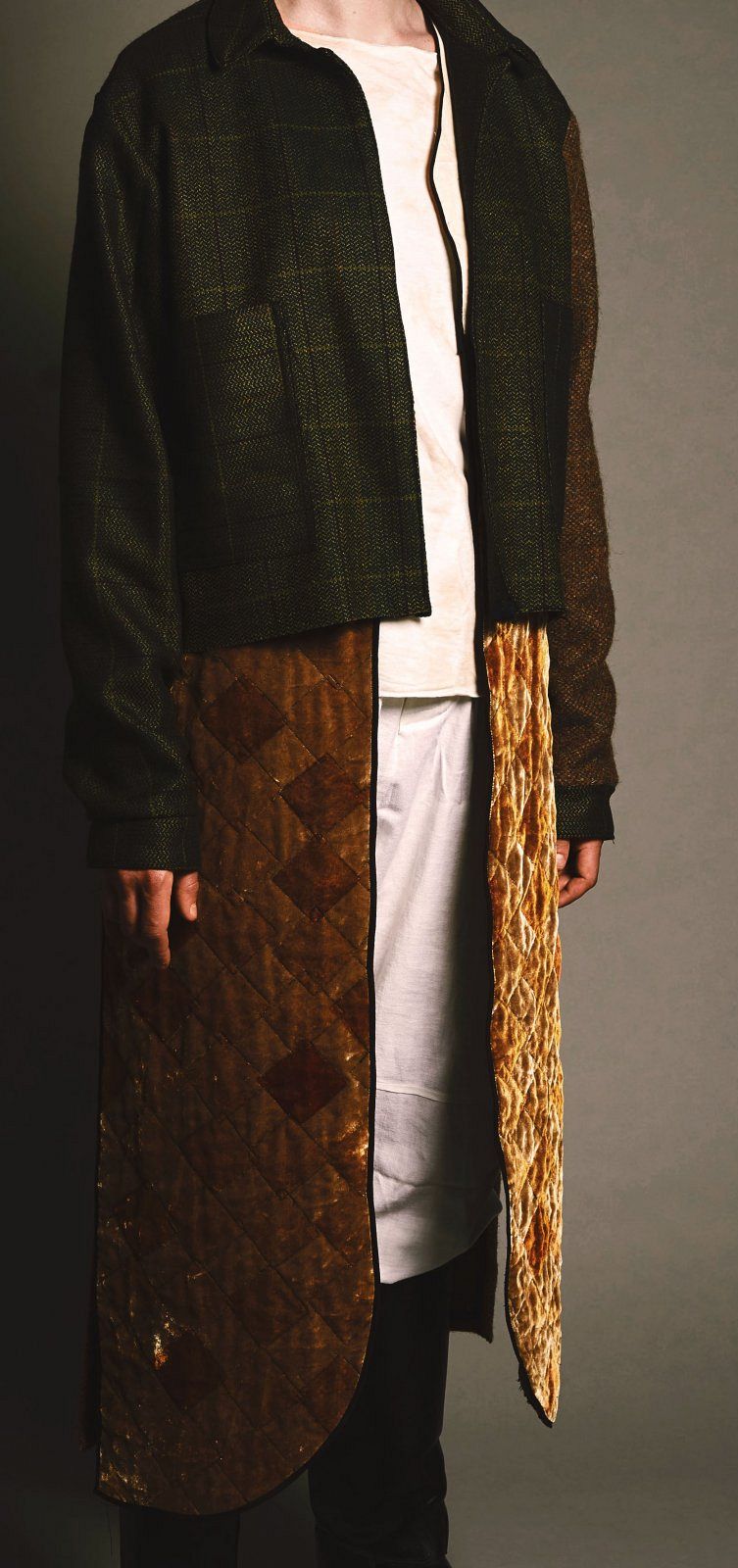
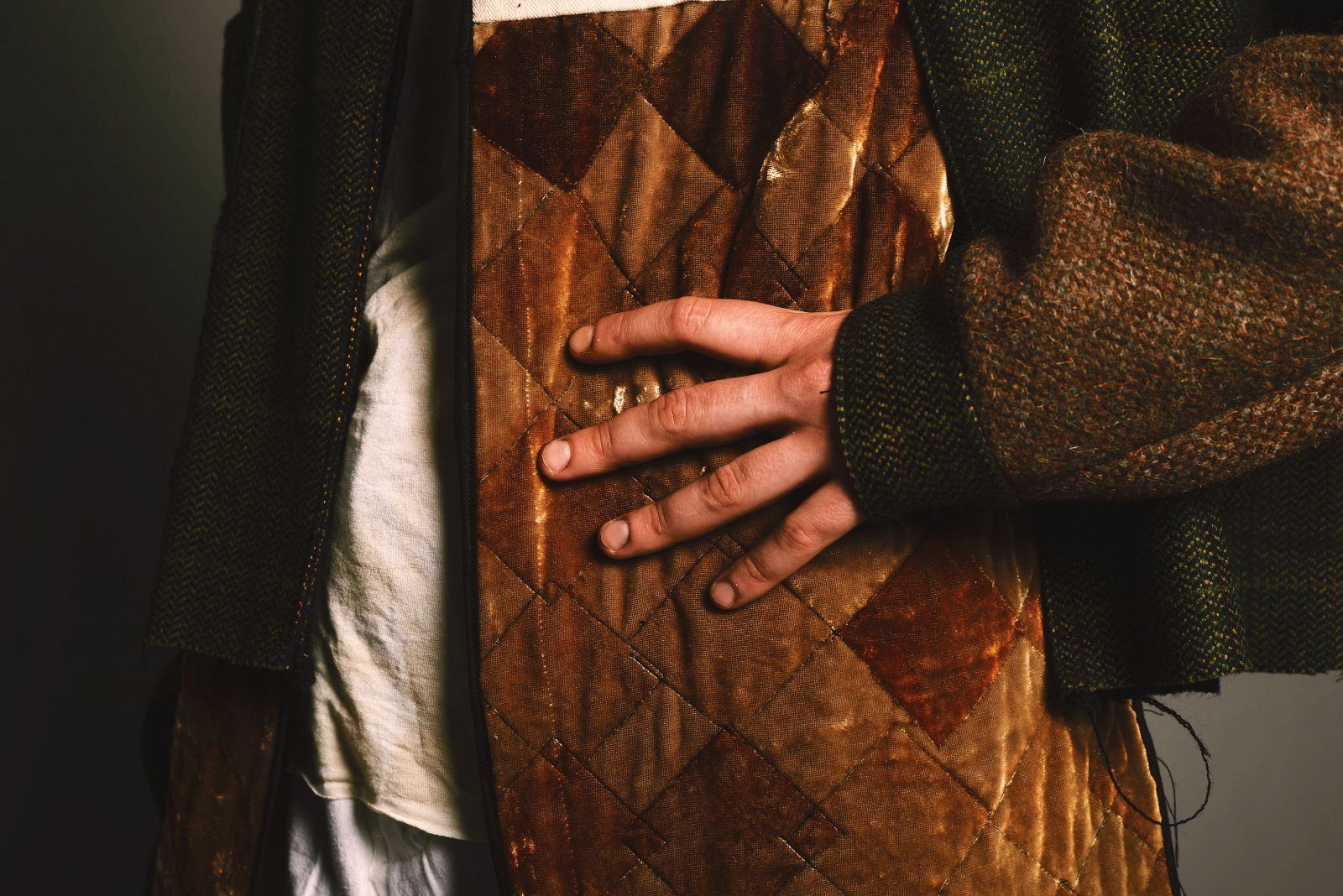
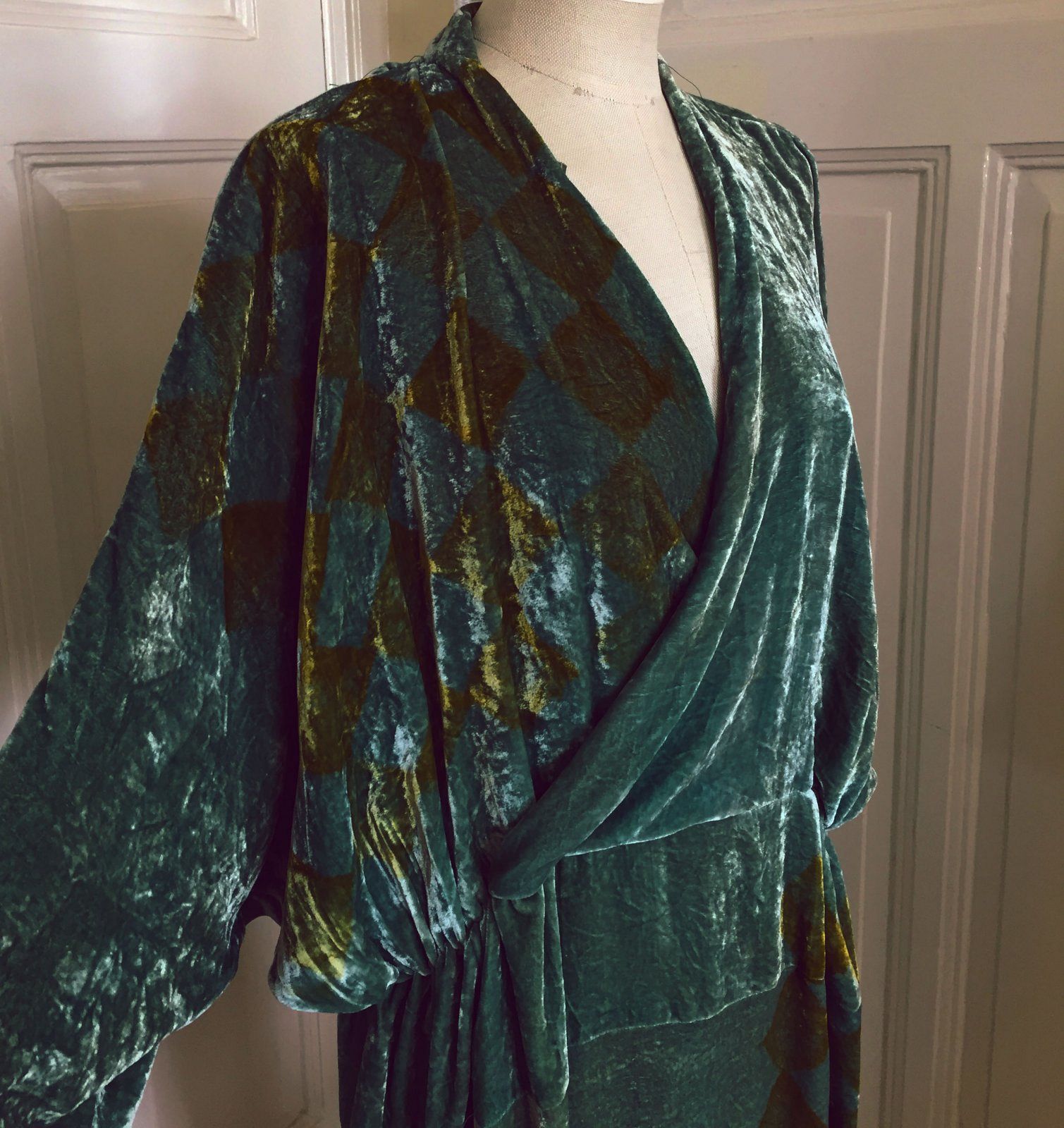
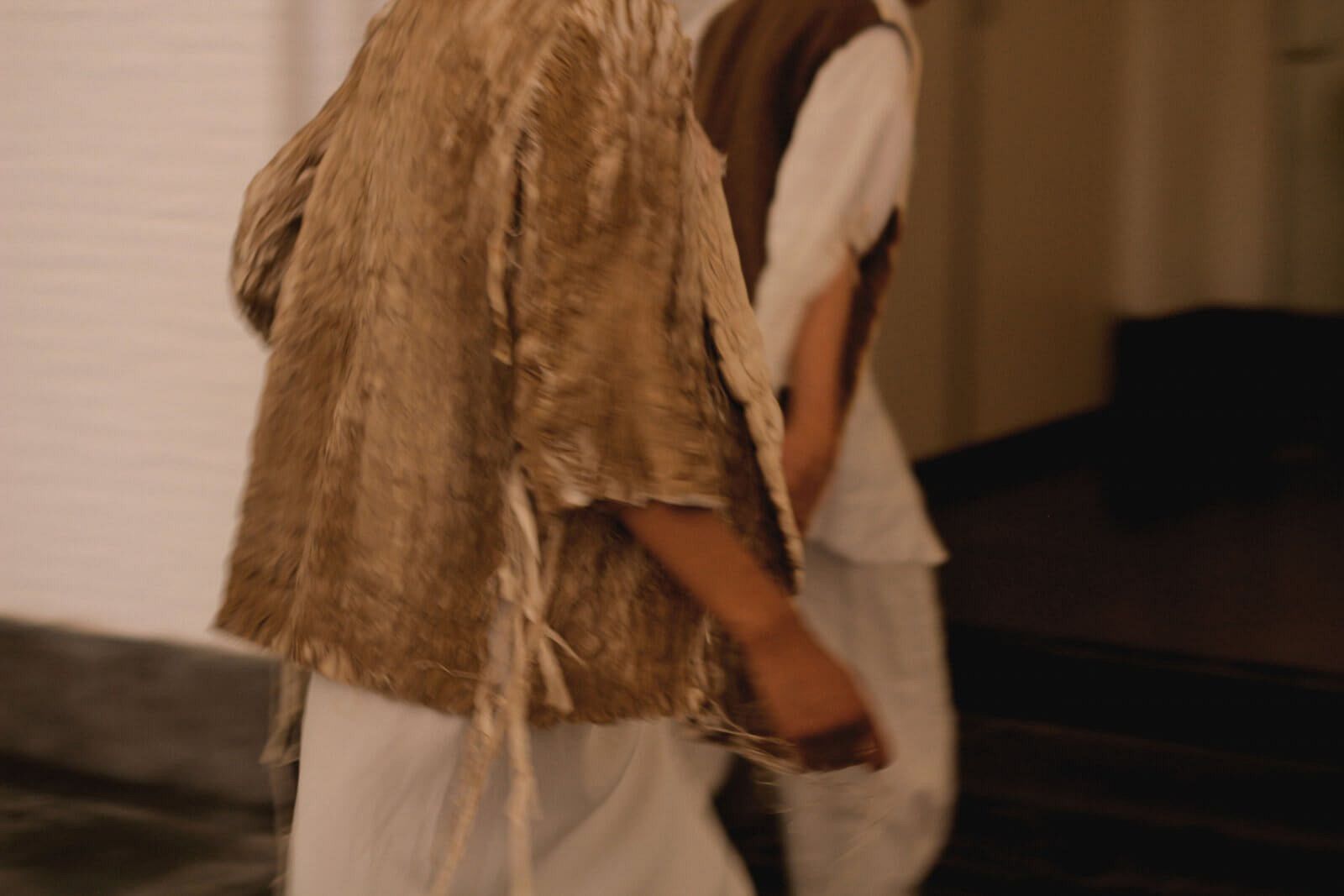
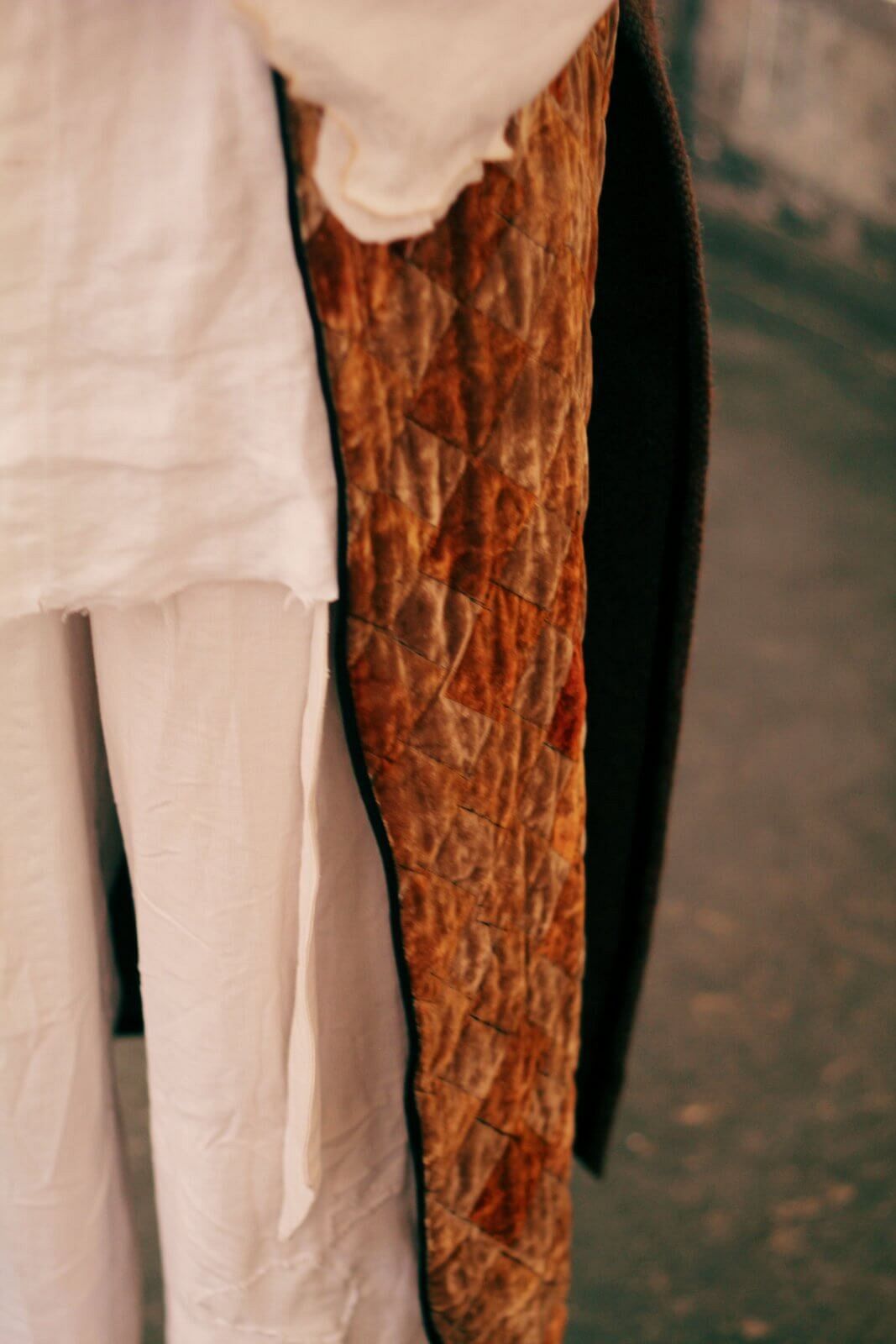

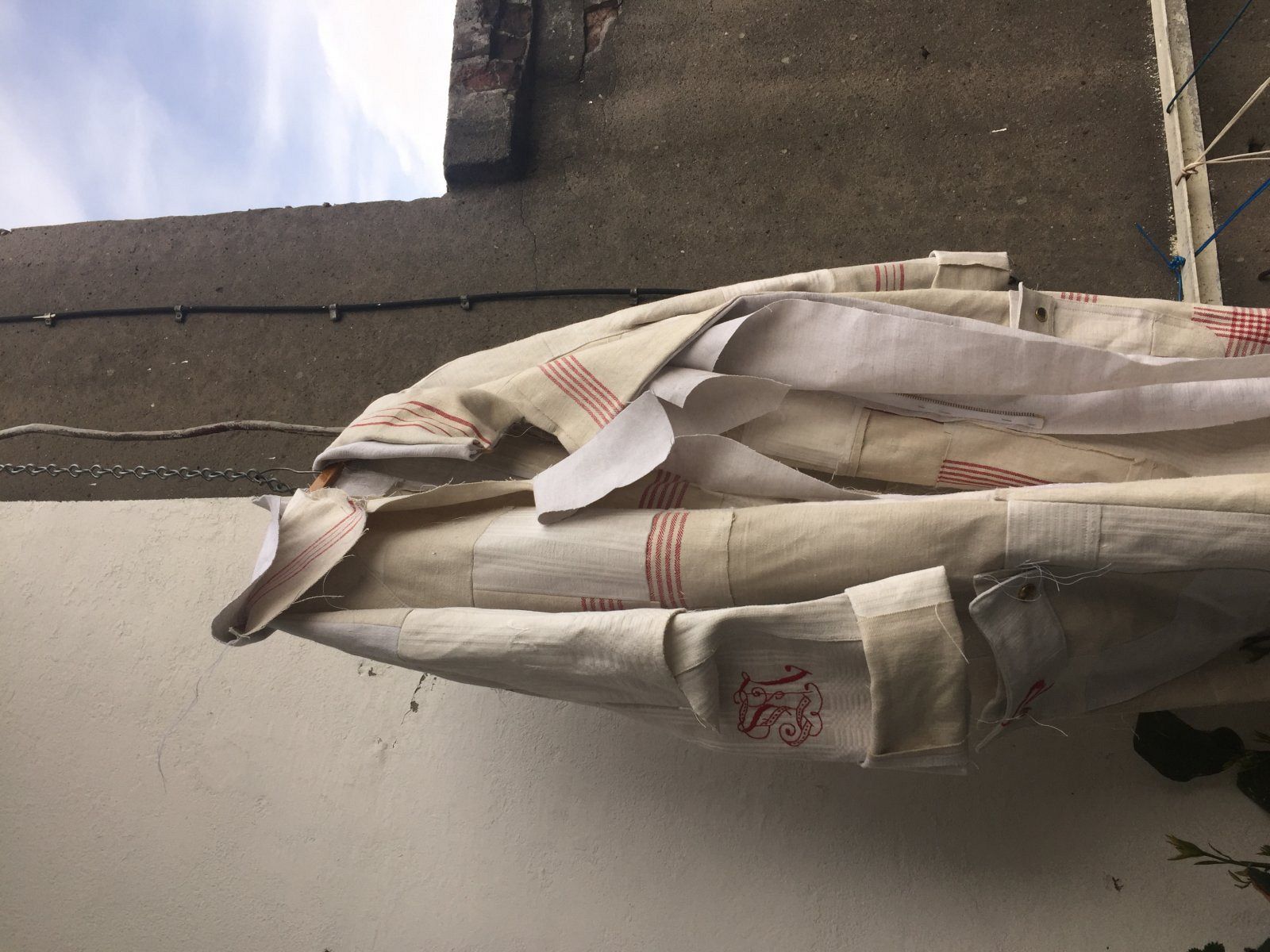

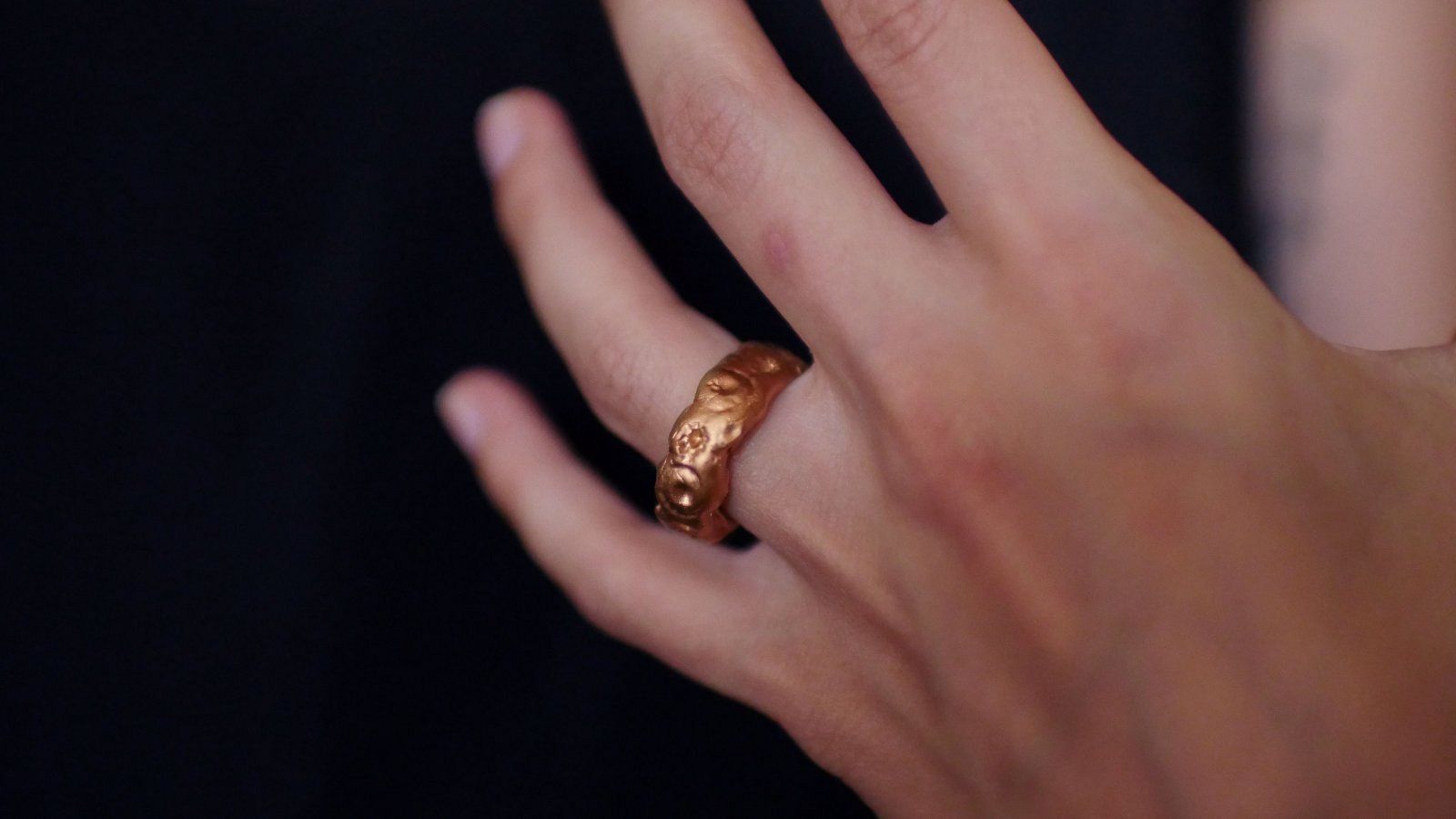
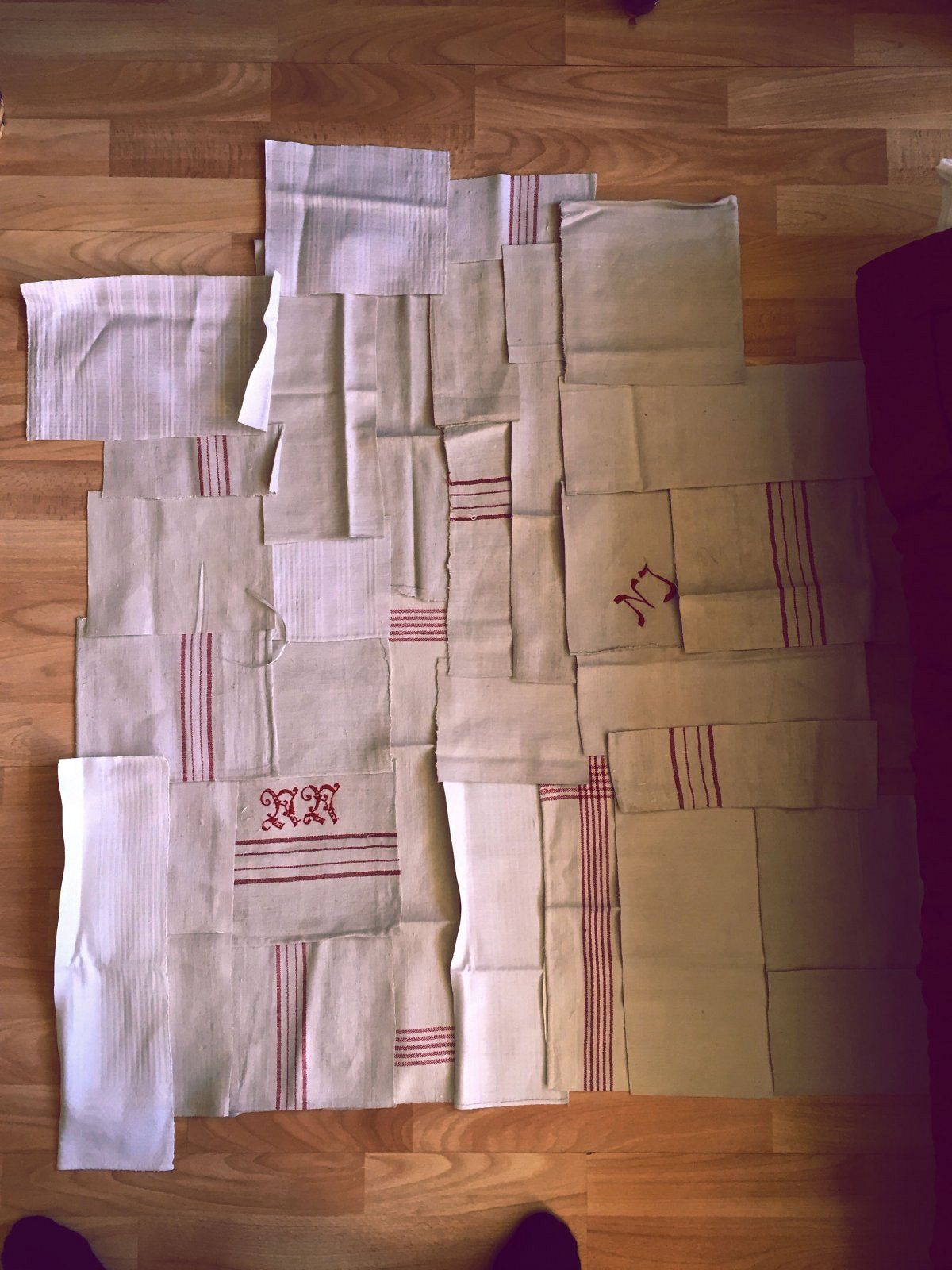
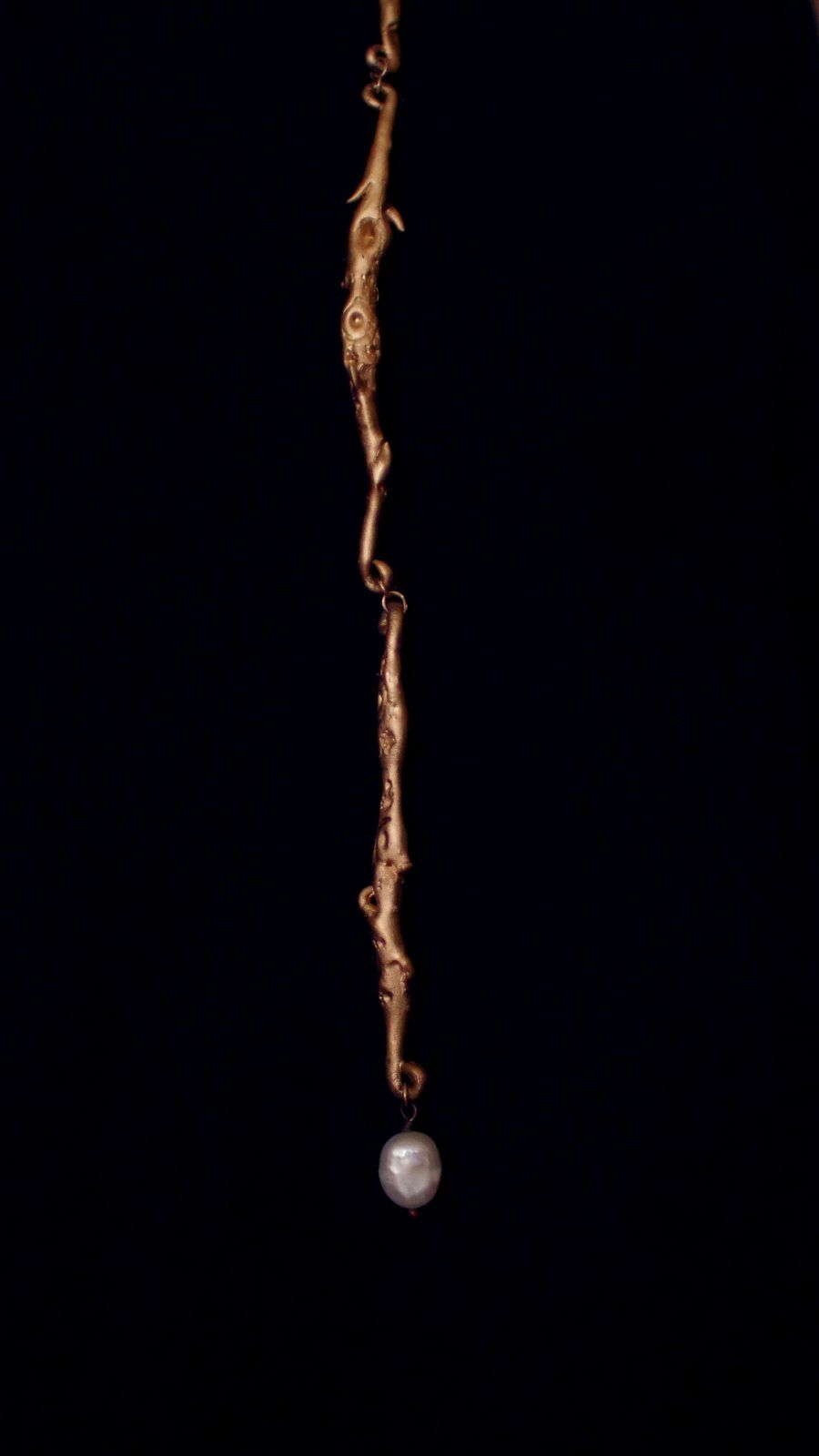
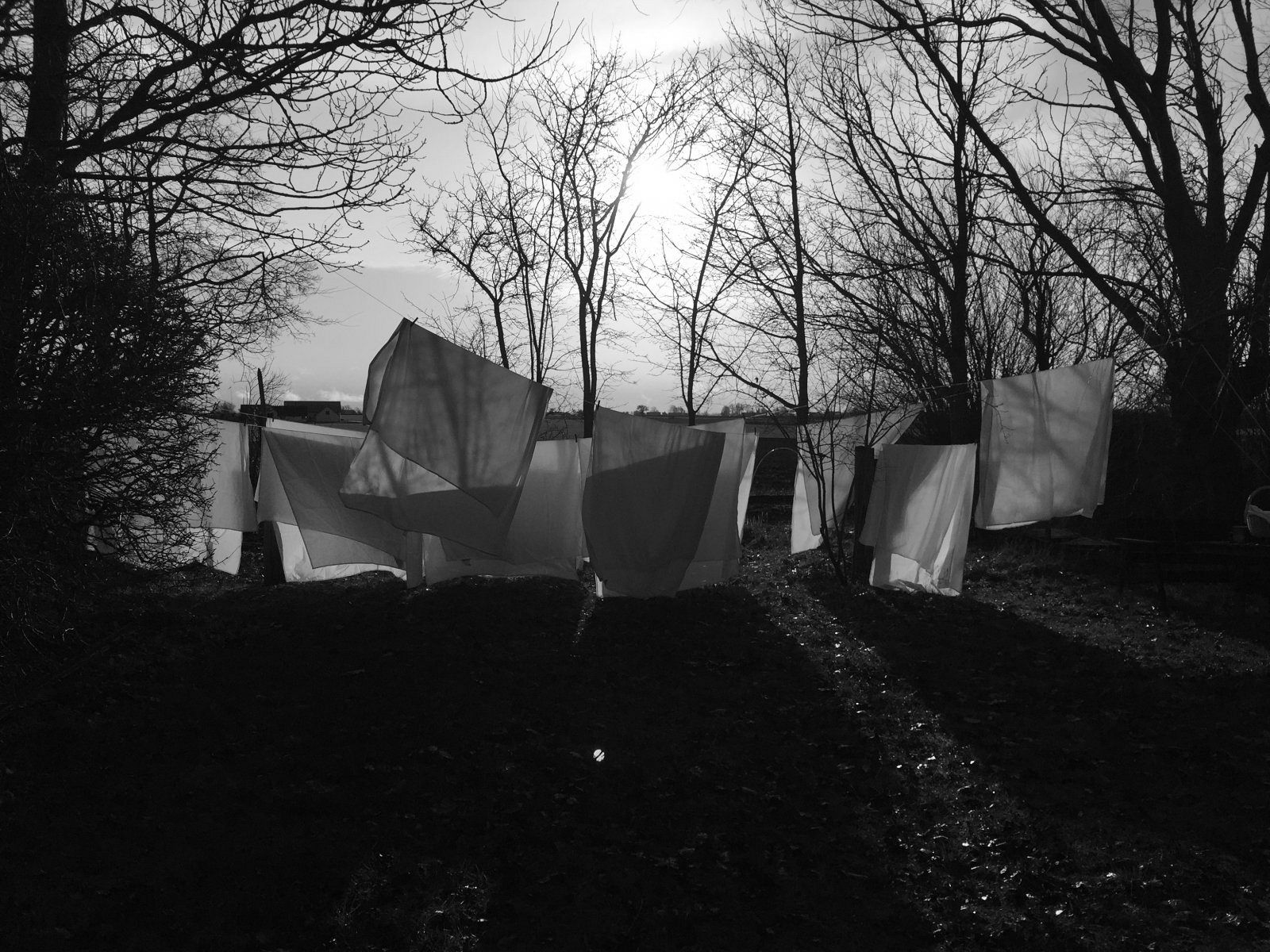

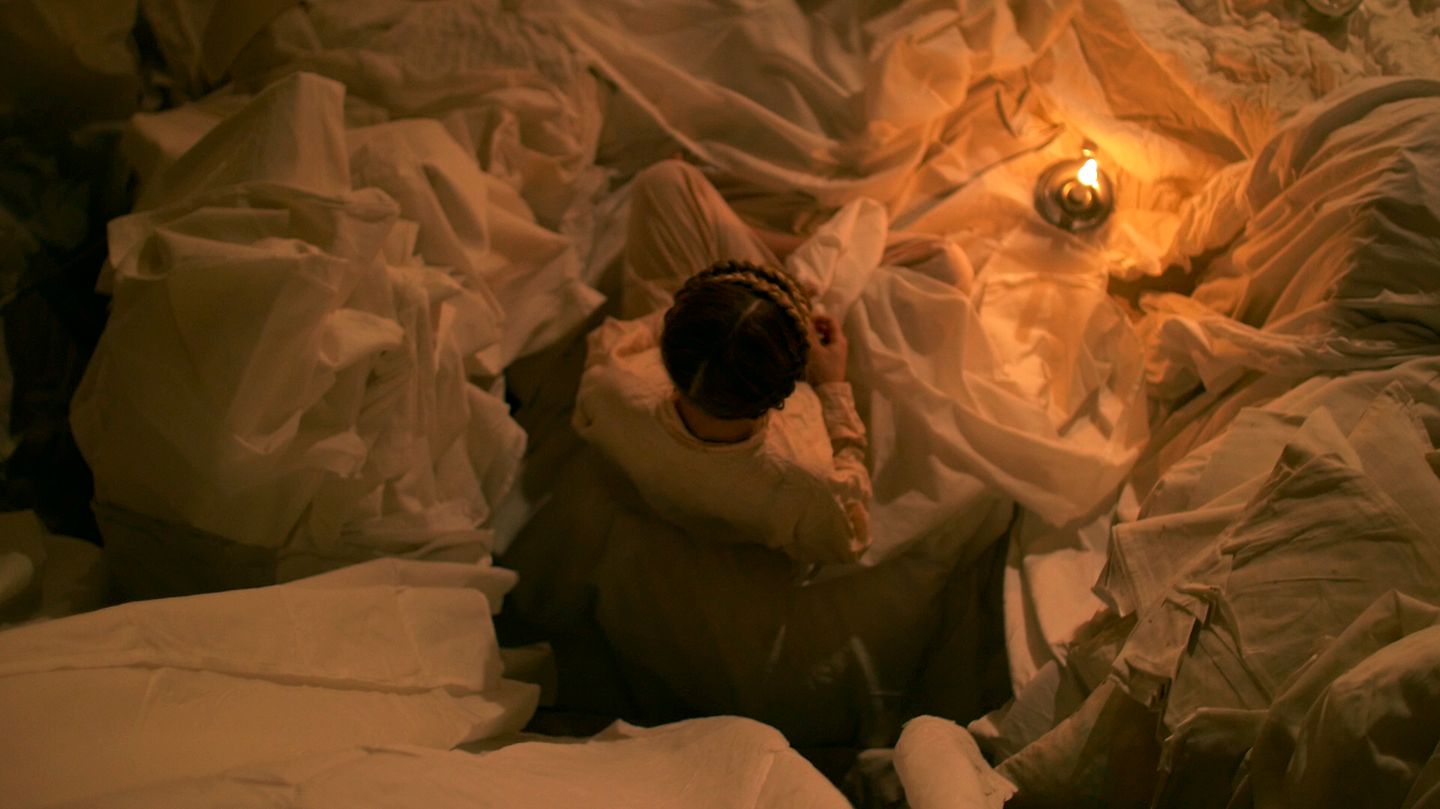
THESIS
A Love Note to the Labouring Body
This collection is about pleasure. It aims to enable you to increase pleasure and beauty through defining them for yourself, and it is a protest against newness as a definition of beauty.
The traces of life lived appear as marks, scars or imperfections on our bodies, on our clothing, on the tools that we use. To know and perform a craft is to embody knowledge, to etch the in- telligence and memory of a skill onto the body itself. The bones, muscles and skin of the worker over time takes on particular characteristics of their trade, where the affect of the body on the work and vice versa create a continuous reciprocity between object and maker, a symbiosis of creation. These beautifying effects of utility on our bodies, clothing and possessions have been shunned and shamed to the point where the ideal form is ageless, smooth, fresh and unyielding to the senses. When we instead shift our perception of beauty to acknowledge the physical traces of life on our bodies and what they wear, we reclaim a desire and pleasure dictated by the senses, and we can all have an active role in living a more beautiful life, free of the prejudice of the eyes.
A modern source of unhappiness is the split between the mind and the body, made flesh when we feel unable to accept and respect the imperfections and characteristics of our physical selves as beautiful. There is a need to confront fashion’s obsession with the new and the perfect, and to give our bodies the ability to speak in a language not dictated by the artificial ideals of for-profit corporations or brands, who have an innate need to create desire for new products and new trends . The signs of life on a body or garments are often seen as difficult and disturbing, rendering life itself within fashion as it is now unwanted and impossible. The clothes we wear are more than merely physical commodities. Through its memory-carrying capacity and representational ability clothing becomes part of our extended body/mind beyond the merely material, an ever-present exchange of sensation and experience between our clothing and us leaving traces and bringing out character in each other. To define what gives you pleasure in this immaterial/material exchange of touch, memory, associations, smell, and so on, is to possess the ability to increase pleasure in the habitual, mundane. This is a study on the importance of redefining beauty for yourself, a case for celebrating the grotesqueness of the body, and increasing sensual pleasure in quotidian life.